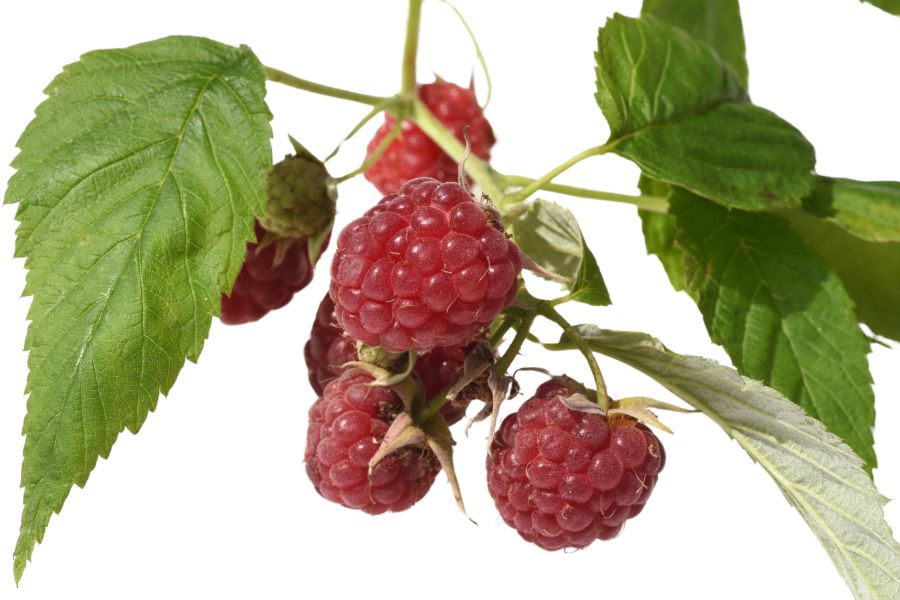Massachusetts is full of edible plants that grow wild in forests, along roadsides, and in backyard corners. You might spot garlic mustard early in the season or come across ripe wild blueberries in sandy pine barrens by midsummer. These are just small glimpses of what’s out there.
Some edible plants are so common in Massachusetts that people step over them daily without realizing their value. Common dandelion and lamb’s quarters are often dismissed as weeds, but both are rich in nutrients and can be cooked or eaten raw. Their presence hints at how much more might be hiding in plain sight.
Once you begin learning how to identify the edible plants scattered across the state, you’ll see just how much variety is available. From salty marsh edges to rocky hillsides, the range of plant life that can end up on your plate is surprising. Knowing what to look for can turn a casual walk into a basket full of food.
What We Cover In This Article:
- The Edible Plants Found in the State
- Toxic Plants That Look Like Edible Plants
- How to Get the Best Results Foraging
- Where to Find Forageables in the State
- Peak Foraging Seasons
- The extensive local experience and understanding of our team
- Input from multiple local foragers and foraging groups
- The accessibility of the various locations
- Safety and potential hazards when collecting
- Private and public locations
- A desire to include locations for both experienced foragers and those who are just starting out
Using these weights we think we’ve put together the best list out there for just about any forager to be successful!
A Quick Reminder
Before we get into the specifics about where and how to find these plants and mushrooms, we want to be clear that before ingesting any wild plant or mushroom, it should be identified with 100% certainty as edible by someone qualified and experienced in mushroom and plant identification, such as a professional mycologist or an expert forager. Misidentification can lead to serious illness or death.
All plants and mushrooms have the potential to cause severe adverse reactions in certain individuals, even death. If you are consuming wild foragables, it is crucial to cook them thoroughly and properly and only eat a small portion to test for personal tolerance. Some people may have allergies or sensitivities to specific mushrooms and plants, even if they are considered safe for others.
The information provided in this article is for general informational and educational purposes only. Foraging involves inherent risks.
The Edible Plants Found in the State
Wild plants found across the state can add fresh, seasonal ingredients to your meals:
Dandelion (Taraxacum officinale)
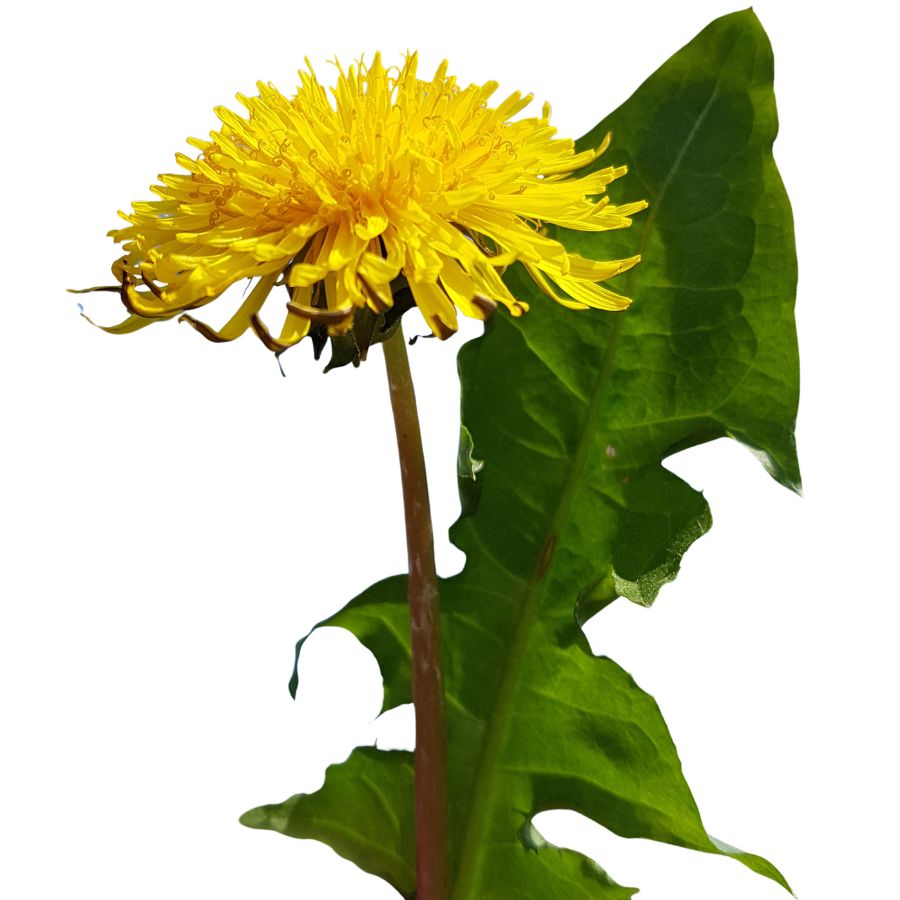
Bright yellow flowers and jagged, deeply toothed leaves make dandelions easy to spot in open fields, lawns, and roadsides. You might also hear them called lion’s tooth, blowball, or puffball once the flowers turn into round, white seed heads.
Every part of the dandelion is edible, but you will want to avoid harvesting from places treated with pesticides or roadside areas with heavy car traffic. Besides being a food source, dandelions have been used traditionally for simple herbal remedies and natural dye projects.
Young dandelion leaves have a slightly bitter, peppery flavor that works well in salads or sautés, and the flowers can be fried into fritters or brewed into tea. Some people even roast the roots to make a coffee substitute with a rich, earthy taste.
One thing to watch out for is cat’s ear, a common lookalike with hairy leaves and branching flower stems instead of a single, hollow one. To make sure you have a true dandelion, check for a smooth, hairless stem that oozes a milky sap when broken.
Blueberry (Vaccinium corymbosum, Vaccinium angustifolium)
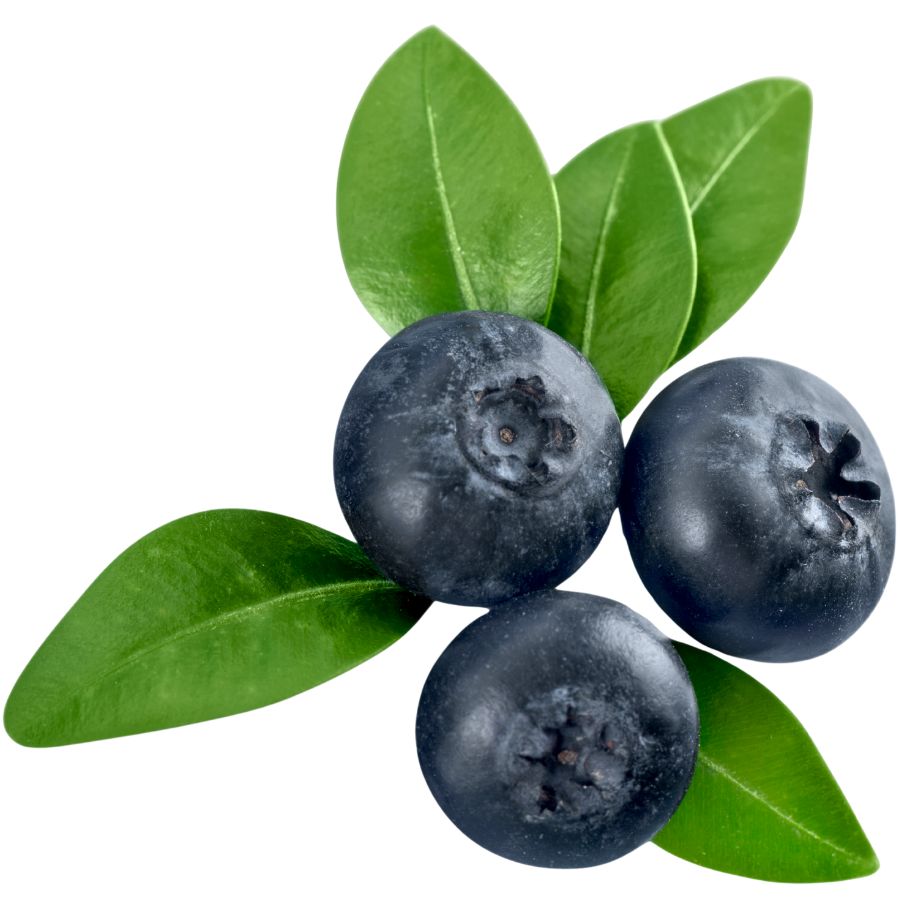
Blueberry, sometimes called highbush or lowbush blueberry depending on the type, grows as a shrub with smooth-edged, oval leaves and clusters of small white or pinkish bell-shaped flowers. The berries start green and ripen to a deep blue with a dusty-looking skin that easily rubs off.
A few lookalikes can confuse foragers, like the berries of Virginia creeper or pokeweed, but the differences are clear when you know what to check. True blueberries grow on woody shrubs and have a five-pointed crown on the bottom of each berry, while dangerous lookalikes often grow on vines or have no crown at all.
Blueberries have a sweet, sometimes tangy flavor and a juicy texture that makes them great for fresh eating. You can also bake them into pies, simmer them into jams, or dry them for snacks.
Only the ripe berries are eaten, while the leaves and stems are usually left alone.
Interestingly, blueberries is that they contain natural pigments that can turn recipes and even your fingers a deep purple when handled.
Wild Leek / Ramp (Allium tricoccum)
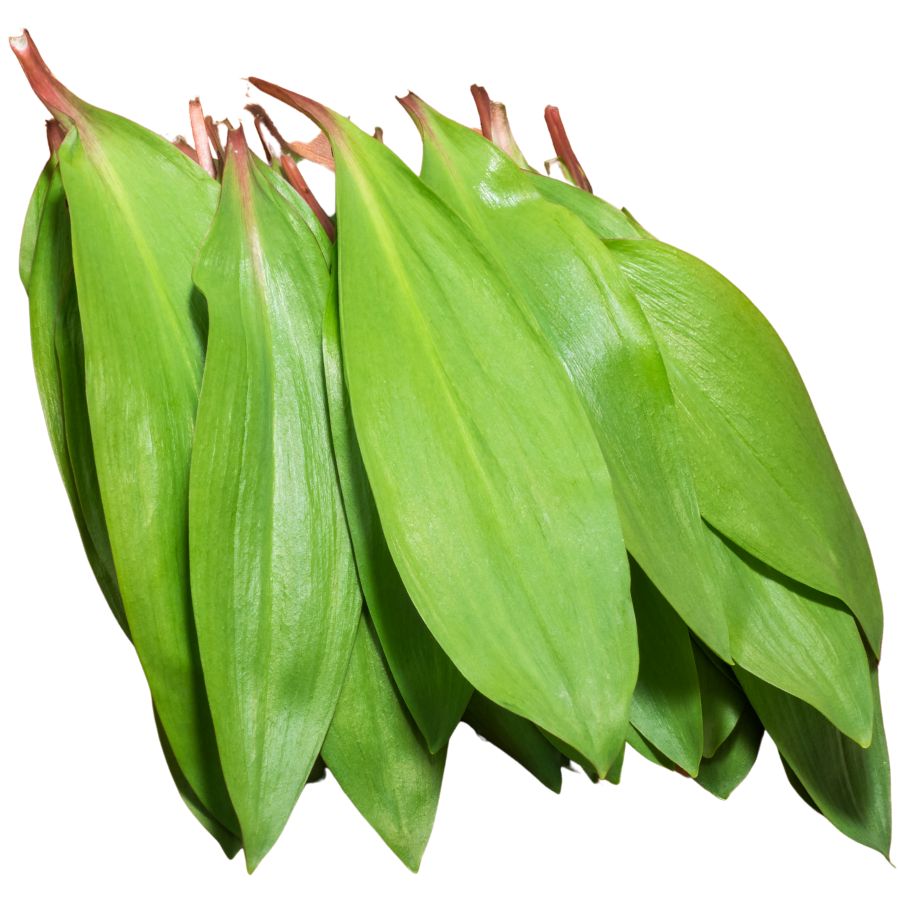
Known as wild leek, ramp, or ramson, this flavorful plant is famous for its broad green leaves and slender white stems. It grows low to the ground and gives off a strong onion-like scent when bruised, which can help you tell it apart from toxic lookalikes like lily of the valley.
If you give it a taste, you will notice a bold mix of onion and garlic flavors, with a tender texture that softens even more when cooked. People often sauté the leaves and stems, pickle the bulbs, or blend them into pestos and soups.
The entire plant can be used for cooking, but the leaves and bulbs are the most prized parts. It is important not to confuse it with similar-looking plants that do not have the signature onion smell when crushed.
Wild leek populations have declined in some areas because of overharvesting, so it is a good idea to only take a few from any given patch. When harvested thoughtfully, these vibrant greens can add a punch of flavor to just about anything you make.
Garlic Mustard (Alliaria petiolata)
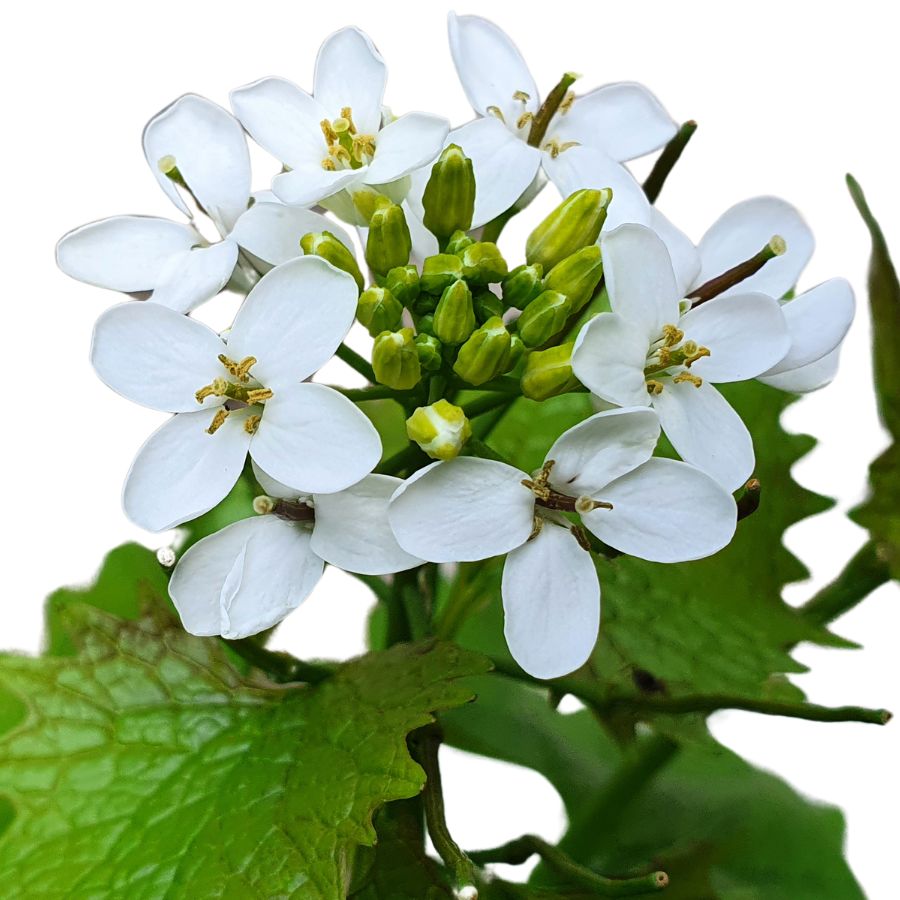
Garlic mustard, sometimes called poor man’s mustard or hedge garlic, has heart-shaped leaves with scalloped edges and small white four-petaled flowers. When you crush the leaves between your fingers, they release a strong garlic-like smell that makes it stand out from similar-looking plants.
The flavor of garlic mustard is sharp and garlicky at first bite, with a peppery bitterness that lingers. Its young leaves are often blended into pestos, stirred into soups, or tossed into salads to add a punch of flavor.
You can also use the roots, which have a taste similar to horseradish when fresh. The seed pods are sometimes collected and used as a spicy seasoning after being dried and crushed.
If you decide to gather some, make sure not to confuse it with plants like ground ivy or purple deadnettle, which do not have that garlic aroma. Stick to harvesting the leaves, flowers, seeds, and roots, and avoid anything with a fuzzy texture or a very different smell.
Blackberry (Rubus fruticosus)
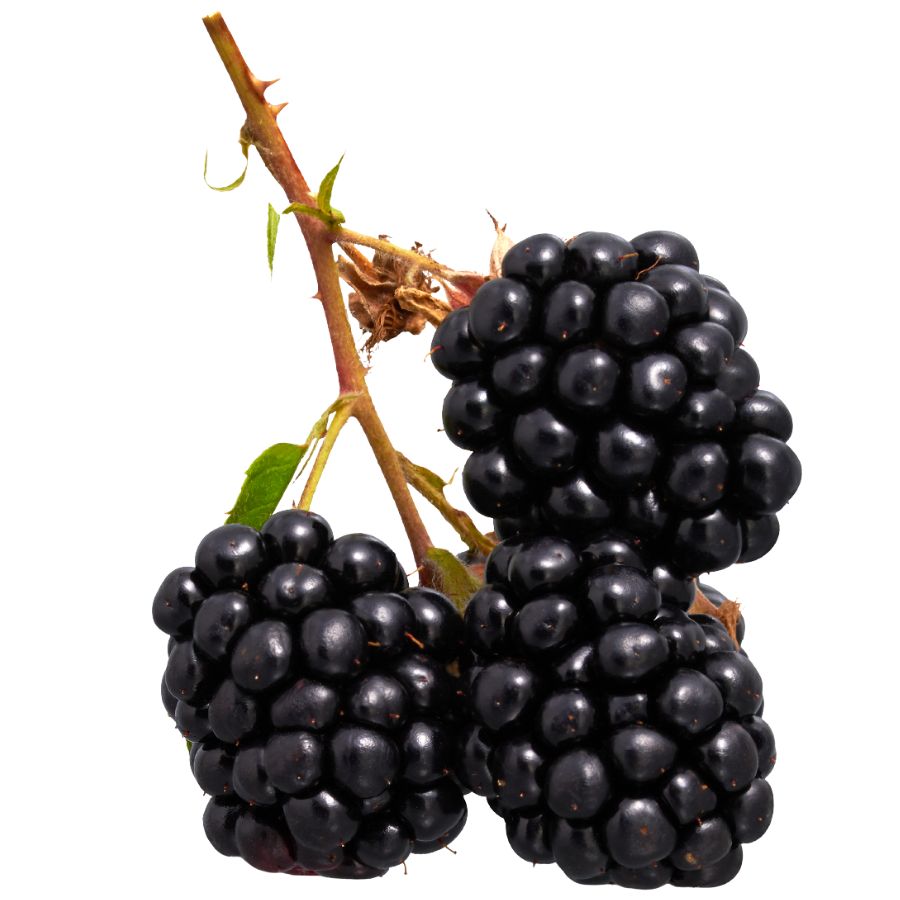
Blackberry, also known as brambleberry or dewberry, grows on thick, thorny canes that can arch and spread across the ground. The leaves are usually serrated, and the fruit ripens from green to red before turning deep purple or black when fully ready to pick.
The berries have a sweet, tangy flavor with a soft, juicy texture that easily bursts in your mouth. You can eat them raw, bake them into pies and cobblers, or preserve them by making jams and jellies.
Only the ripe fruit of the blackberry plant is edible, while the stems and leaves are not usually eaten.
Some plants like black raspberry can look similar, but black raspberries are hollow in the center when picked while blackberries have a solid core. It’s important to avoid confusing blackberries with nightshade berries, which grow on upright plants without thorny vines and can be toxic.
An interesting thing about blackberries is that they are technically not a single berry but a cluster of small drupelets packed together.
Black Raspberry (Rubus occidentalis)

Black raspberries grow on arching canes covered with small, hooked thorns. The berries start out red before ripening to a deep purplish-black color, and they have a hollow core when picked.
The fruit tastes sweet with a mild tartness, and the texture is juicy but slightly firmer than a red raspberry. People often use black raspberries for jams, pies, syrups, and even simple fruit leathers made at home.
Blackberry and wineberry are common lookalikes, which can confuse foragers at first glance. Black raspberry canes usually have a whitish coating and smaller thorns compared to the shinier, stouter canes of a blackberry.
You can eat the ripe fruit raw or cooked, but the leaves are sometimes brewed into teas after proper drying. It is best to avoid the green, unripe berries, as they are tough and lack the flavor that makes black raspberry such a favorite.
Red Raspberry (Rubus idaeus)
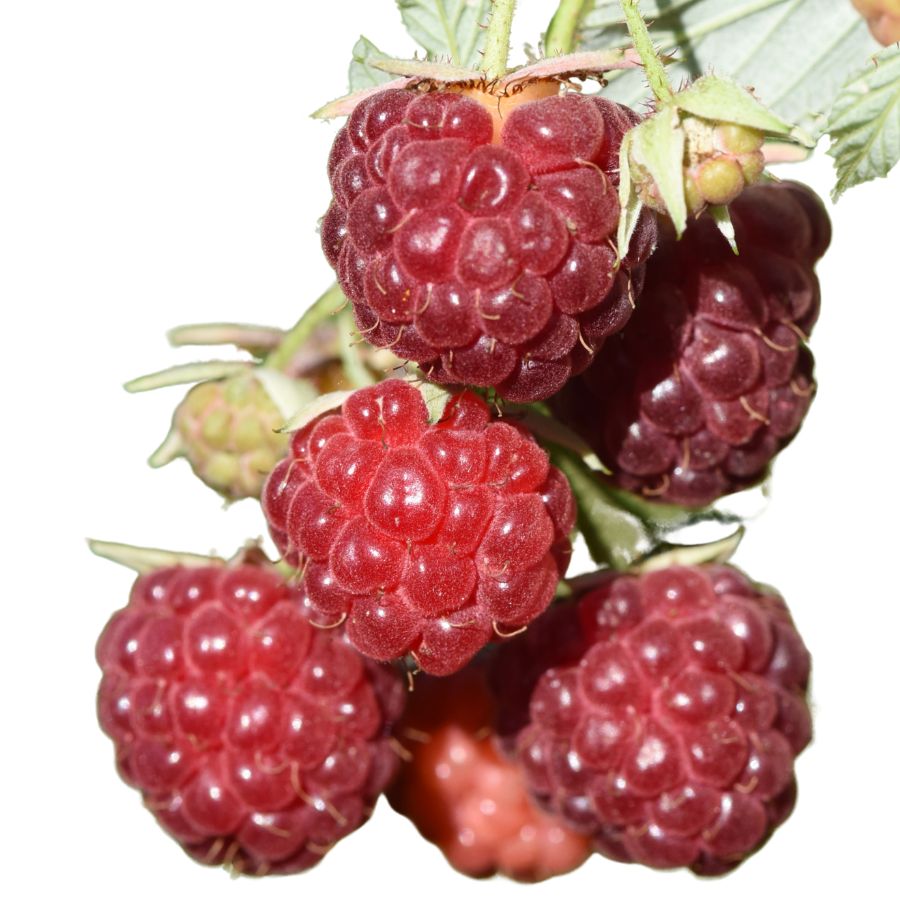
The red raspberry, also called wild raspberry or bramble raspberry, grows on prickly, arching canes with compound leaves and clusters of red drupelets. You’ll usually find them forming loose thickets, with berries that pull away cleanly from the core when ripe.
The fruit is sweet-tart and juicy with a soft, seedy texture, often used in jams, jellies, or baked into pies. Leaves and stems aren’t edible and shouldn’t be consumed.
While it looks a lot like wineberry or thimbleberry, red raspberry’s hollow core and matte, soft drupelets help separate it from those. Wineberries, in particular, have a shiny, sticky coating and red bristles on their stems.
Unwashed berries can sometimes host small insects or eggs, so rinse them thoroughly before eating or preserving. The fruit can also be frozen or dried for later use, though fresh is when it’s most flavorful.
Plantain (Plantago major, Plantago lanceolata)
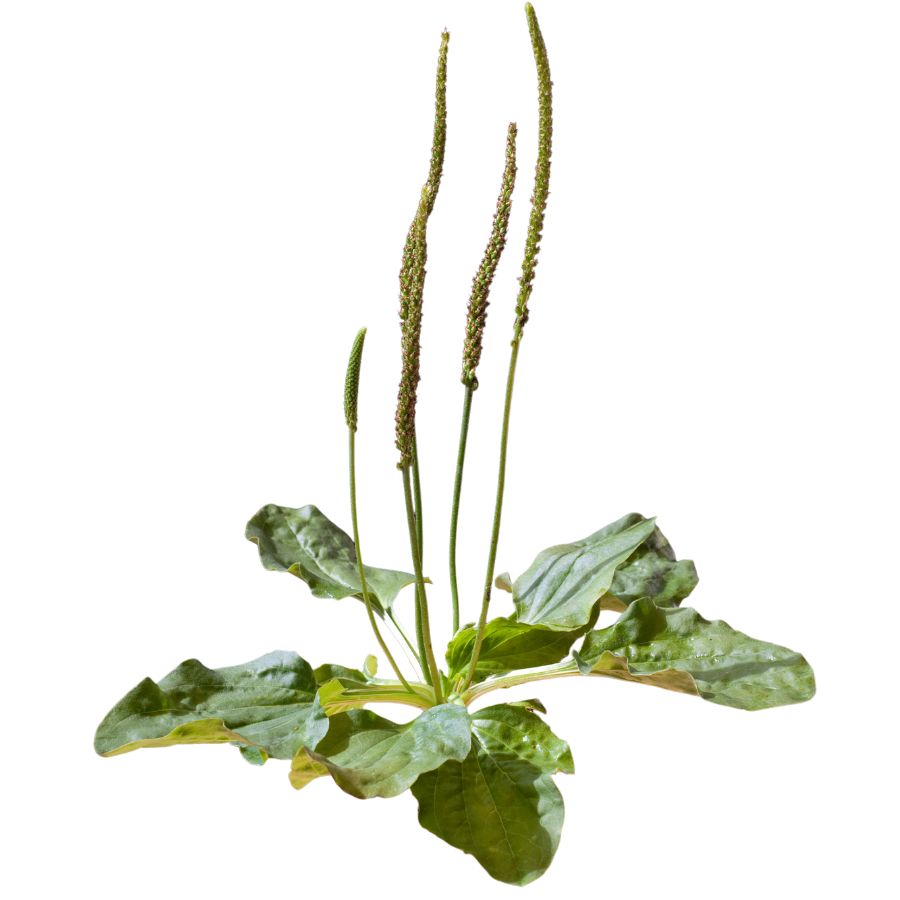
Plantain, also called common plantain or narrowleaf plantain depending on the type, is a low-growing plant with broad or lance-shaped leaves and tall, slender flower spikes. The leaves grow in a rosette close to the ground, and the thick veins running through them are one of the easiest ways to tell it apart from other plants.
You can mainly eat the young leaves and the seeds of the plants. Older leaves can become tough and stringy, so it is best to pick the smaller, tender ones when you want to eat them.
Plantain leaves have a slightly bitter, earthy taste and a chewy texture, especially when eaten raw. Many people like to add them to salads, soups, or stews, or lightly steam them to soften the flavor.
Always make sure you have a true plantain before eating because some similar-looking yard plants are not palatable and can upset your stomach. Look for the strong parallel veins and the tough, fibrous stems to help confirm your find.
Lamb’s Quarters (Chenopodium album)
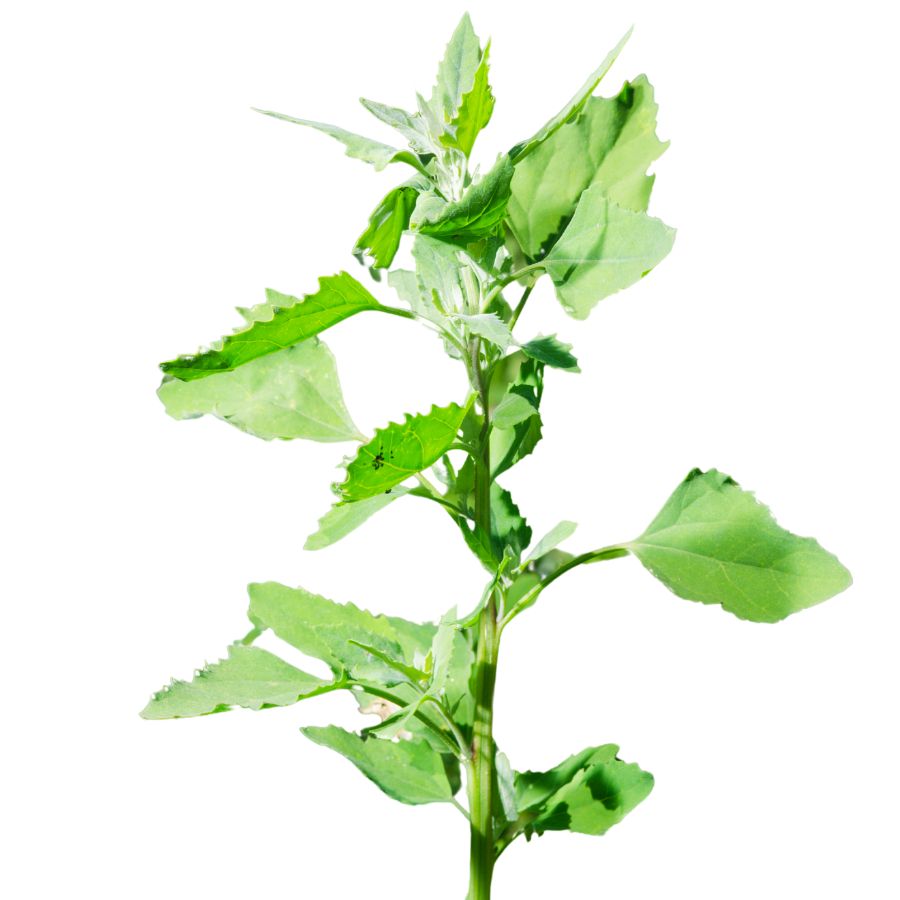
Lamb’s quarters, also called wild spinach and pigweed, has soft green leaves that often look dusted with a white, powdery coating. The leaves are shaped a little like goose feet, with slightly jagged edges and a smooth underside that feels almost velvety when you touch it.
A few plants can be confused with lamb’s quarters, like some types of nightshade, but true lamb’s quarters never have berries and its leaves are usually coated in that distinctive white bloom. Always check that the stems are grooved and not round and smooth like the poisonous lookalikes.
When you taste lamb’s quarters, you will notice it has a mild, slightly nutty flavor that gets richer when cooked. The young leaves, tender stems, and even the seeds are all edible, but you should avoid eating the older stems because they become tough and stringy.
People often sauté lamb’s quarters like spinach, blend it into smoothies, or dry the leaves for later use in soups and stews. It is also rich in oxalates, so you will want to cook it before eating large amounts to avoid any problems.
Wild Strawberry (Fragaria virginiana)
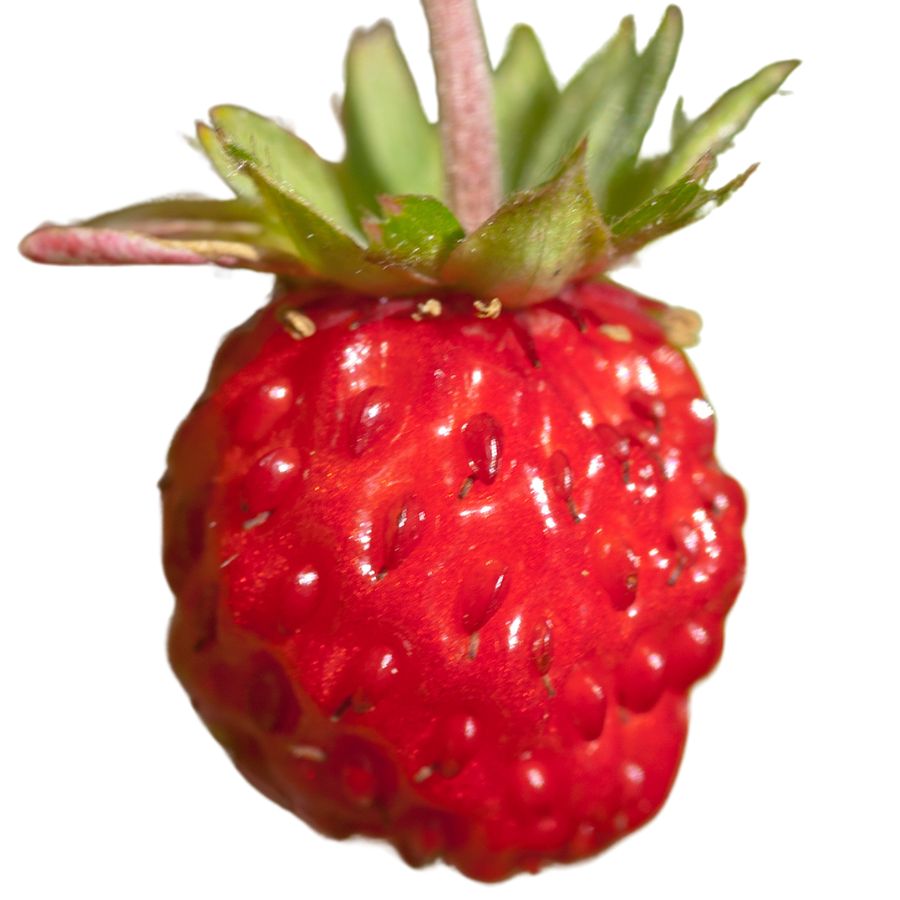
Wild strawberry, sometimes called Virginia strawberry or mountain strawberry, grows low to the ground with three-part leaves that have jagged edges. The small white flowers with yellow centers eventually give way to tiny, bright red fruits nestled close to the soil.
The fruits are sweet with a burst of tartness, and their texture is much softer than the large cultivated strawberries you find in stores. You can eat them raw, mix them into jams, or bake them into pies for a rich, fruity flavor.
Wild strawberry can sometimes be confused with mock strawberry, which has similar leaves but produces dry, flavorless fruits and yellow flowers instead of white. Always check the flower color and taste a small piece before collecting more.
Only the berries and the tender young leaves of wild strawberry are edible, with the leaves often brewed into teas. Be careful not to overharvest because these plants grow slowly and support plenty of small wildlife.
Chickweed (Stellaria media)
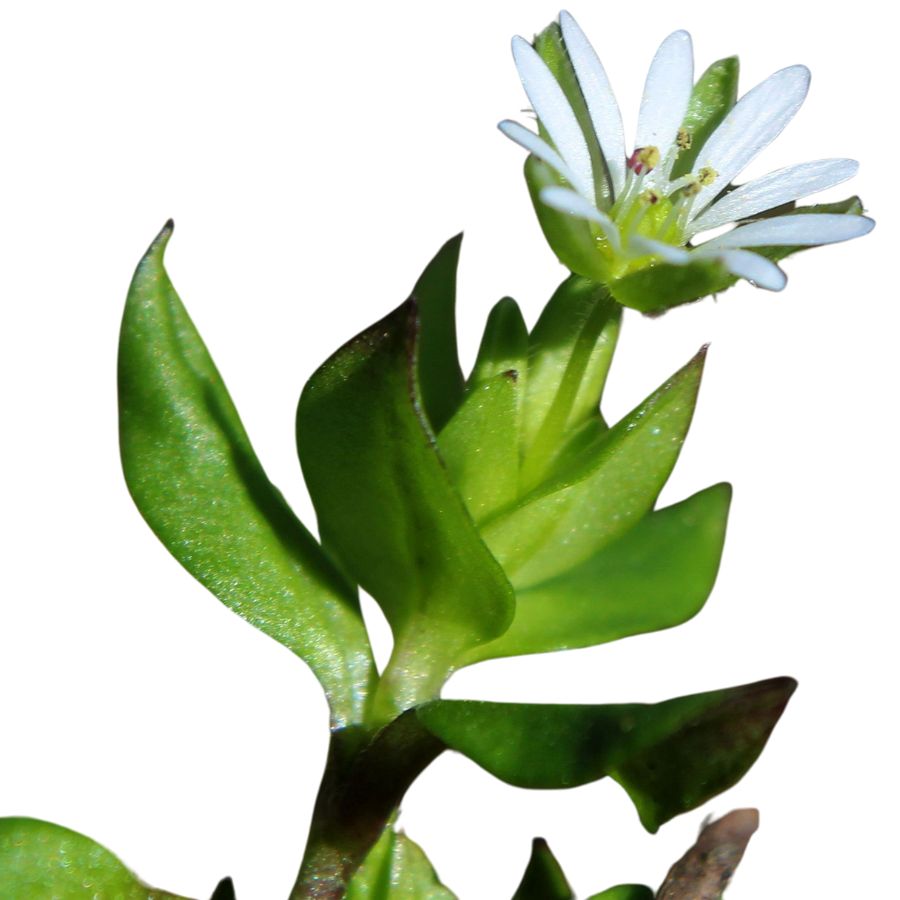
Chickweed, sometimes called satin flower or starweed, is a small, low-growing plant with delicate white star-shaped flowers and bright green leaves. The leaves are oval, pointed at the tip, and often grow in pairs along a slender, somewhat weak-looking stem.
When gathering chickweed, watch out for lookalikes like scarlet pimpernel, which has similar leaves but orange flowers instead of white. A key detail to check is the fine line of hairs that runs along one side of chickweed’s stem, a feature the dangerous lookalikes do not have.
The young leaves, tender stems, and flowers of chickweed are all edible, offering a mild, slightly grassy flavor with a crisp texture. You can toss it fresh into salads, blend it into pestos, or lightly wilt it into soups and stir-fries for a fresh green boost.
Aside from being a food plant, chickweed has been used traditionally in poultices and salves to help soothe skin irritations. Always make sure the plant is positively identified before eating, since mistaking it for a toxic lookalike could cause serious issues.
Wood Sorrel (Oxalis stricta)
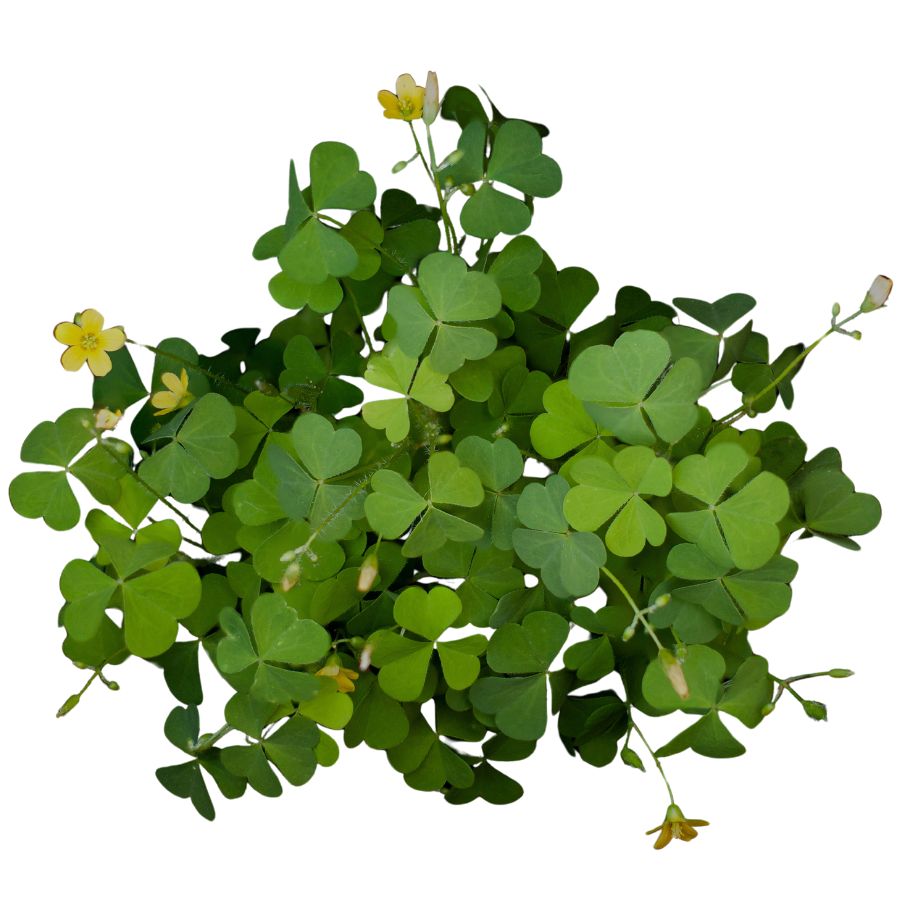
Wood sorrel has clover-like leaves and small yellow flowers. Each leaflet is heart-shaped, and the plant often folds up when touched or in low light.
The leaves, flowers, and seed pods are all safe to eat and have a tart, lemony flavor thanks to the oxalic acid they contain. You can toss them into salads, use them as a garnish, or nibble on them raw for a refreshing sour bite.
Be careful not to confuse it with clover, which has rounder leaves and lacks the same sharp tang when tasted. Large amounts of wood sorrel aren’t recommended if you have kidney issues, since oxalic acid can be hard on the kidneys over time.
The texture of the leaves is soft and delicate, making them a nice contrast in dishes with heavier greens. Even the seed pods have a bit of crunch and a pleasant tang if you catch them before they dry out.
Fox Grape (Vitis labrusca)
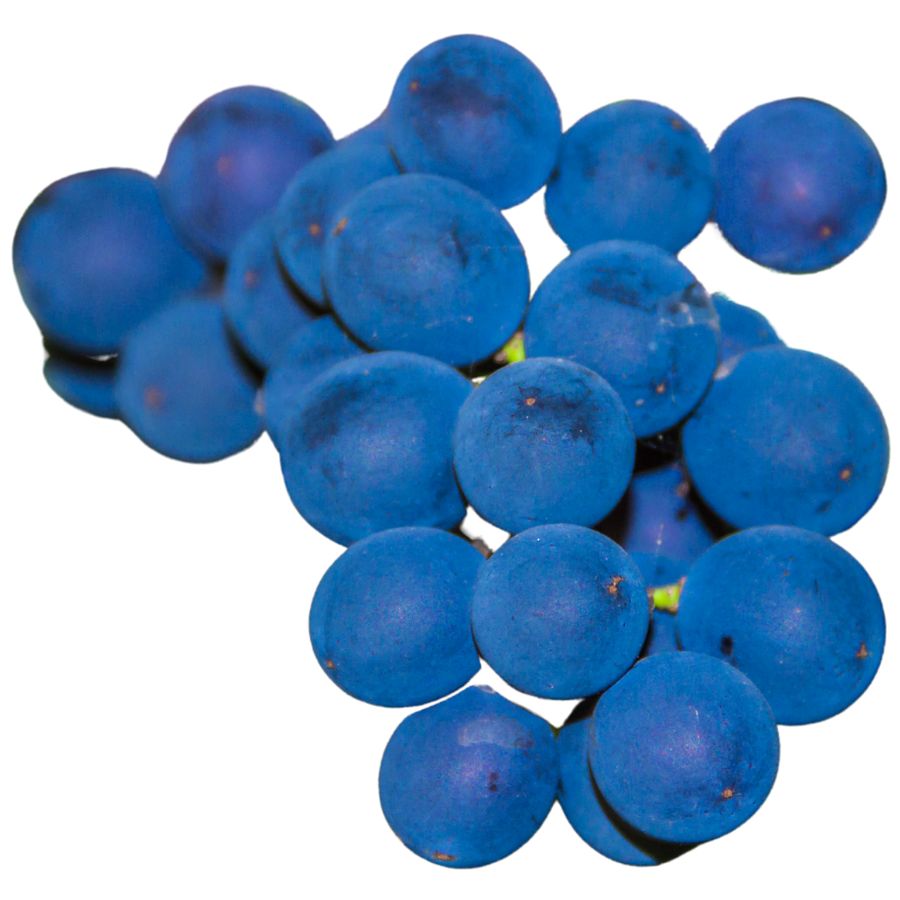
Fox grape grows on high-climbing vines that drape over trees and fences. Its fruits grow in loose clusters, each grape about the size of a marble with a dusky bloom and thick skin.
The taste is bold—pungent and tangy, with a deep sweetness that kicks in once cooked. It’s popular for homemade jellies, syrups, and wild grape wine.
The seeds are large and slippery, and while you can eat them, most people spit them out. Leaves and stems aren’t edible and shouldn’t be consumed.
Don’t confuse it with Canada moonseed, which lacks the distinctive grape-like aroma and has crescent-shaped seeds instead of round ones. That one’s toxic and shouldn’t be tasted under any circumstances.
Wild Garlic (Allium vineale)
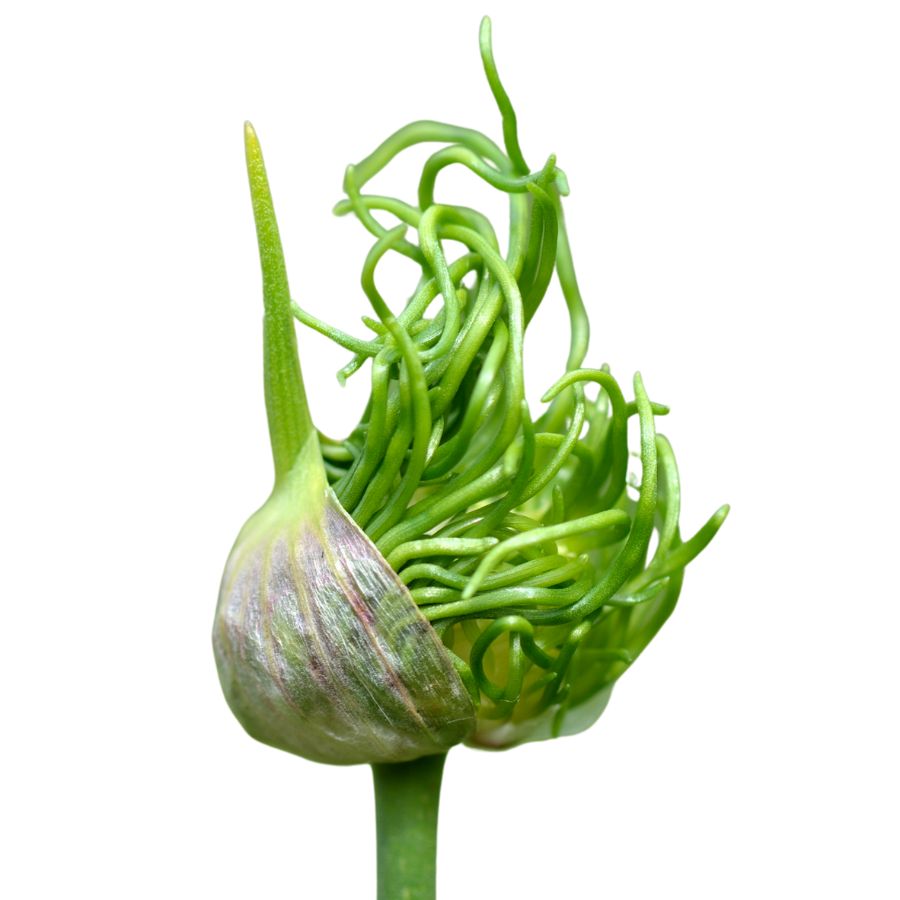
Wild garlic has slender, hollow leaves that look a lot like chives. When you crush the leaves or bulbs between your fingers, they release a strong garlicky smell that makes identification easier.
The are both edible, and You can use the bulbs and leaves raw or cooked in different dishes. Just make sure you are not mistaking it for toxic lookalikes like death camas, which does not smell like garlic at all.
Wild garlic has a sharp, onion-garlic flavor that becomes milder when cooked. You can chop the leaves into salads, stir them into soups, or blend them into sauces like pesto.
One thing to watch for is that the bulbs can sometimes have a tough, fibrous outer layer you will want to peel away before eating. If you want the best flavor, focus on younger, tender leaves rather than older, stringy ones.
Milkweed (Asclepias syriaca)
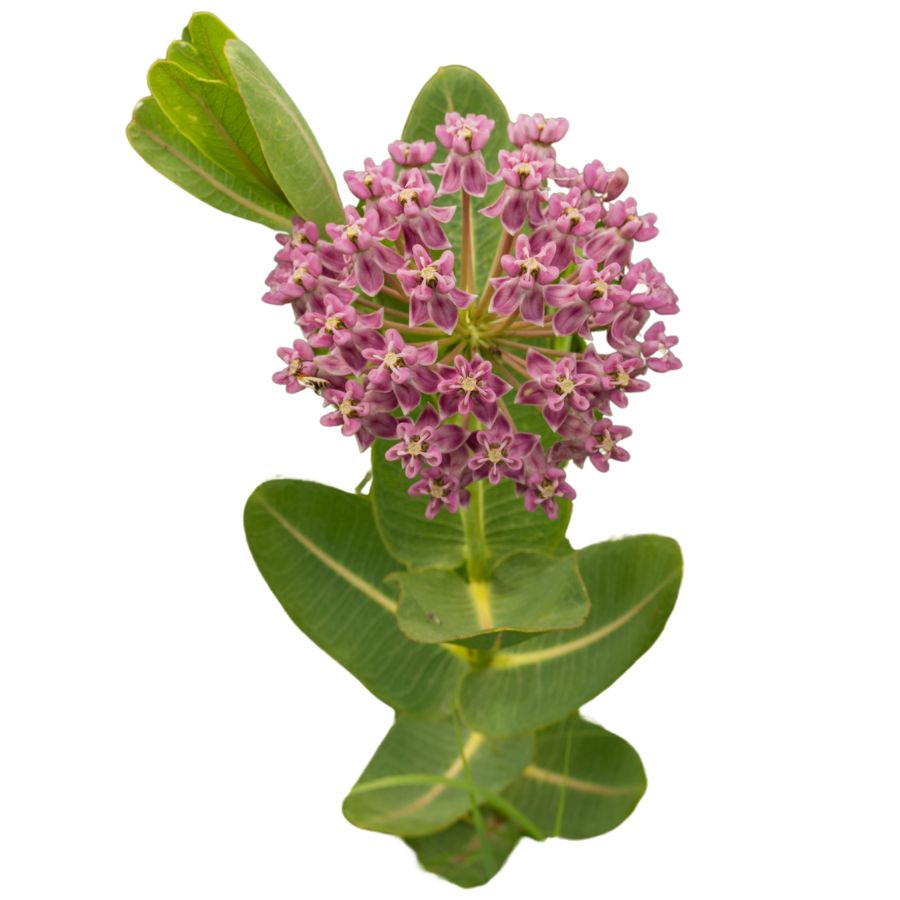
Known for its thick stems, broad leaves, and clusters of pinkish-purple flowers, common milkweed is sometimes called silkweed or butterfly flower. When you snap a stem or leaf, it releases a milky sap that helps you tell it apart from other plants that can be harmful.
If you want to try it in the kitchen, focus on gathering the young shoots, the tightly closed flower buds, and the small, immature pods. These parts have a mild, slightly sweet flavor when cooked, and their soft texture makes them a good addition to soups, sautés, and fritters.
Getting it ready to eat takes a little care, since boiling the plant parts in several changes of water helps remove bitterness and unwanted compounds. Some people also like to steam the buds or fry the pods lightly to bring out their best taste.
Although monarch caterpillars rely on this plant for survival, it has a long history of being used by people as well. Watch out for lookalikes like dogbane, though, since they share the same milky sap but are dangerously toxic if eaten.
Stinging Nettle (Urtica dioica)
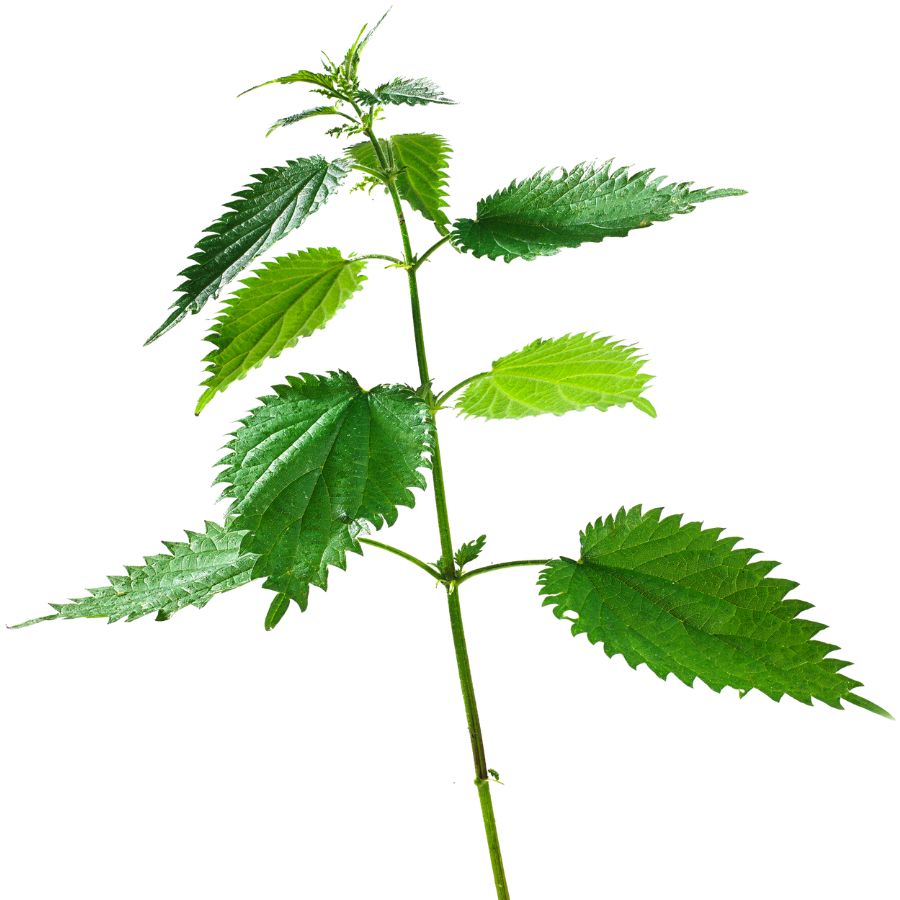
Stinging nettle is also known as burn weed or devil leaf, and it definitely earns those names. The tiny hairs on its leaves and stems can leave a painful, tingling rash if you brush against it raw, so always wear gloves when handling it.
Once it’s cooked or dried, those stingers lose their punch, and the leaves turn mild and slightly earthy in flavor. The texture softens too, making it a solid substitute for spinach in soups, pastas, or even as a simple sauté.
The young leaves and tender tops are what you want to collect. Avoid the tough lower stems and older leaves, which can be gritty or unpleasant to chew.
Some people confuse stinging nettle with purple deadnettle or henbit, but those don’t sting and have more rounded, fuzzy leaves. If the plant doesn’t make your skin react, it’s not stinging nettle.
Sheep Sorrel (Rumex acetosella)
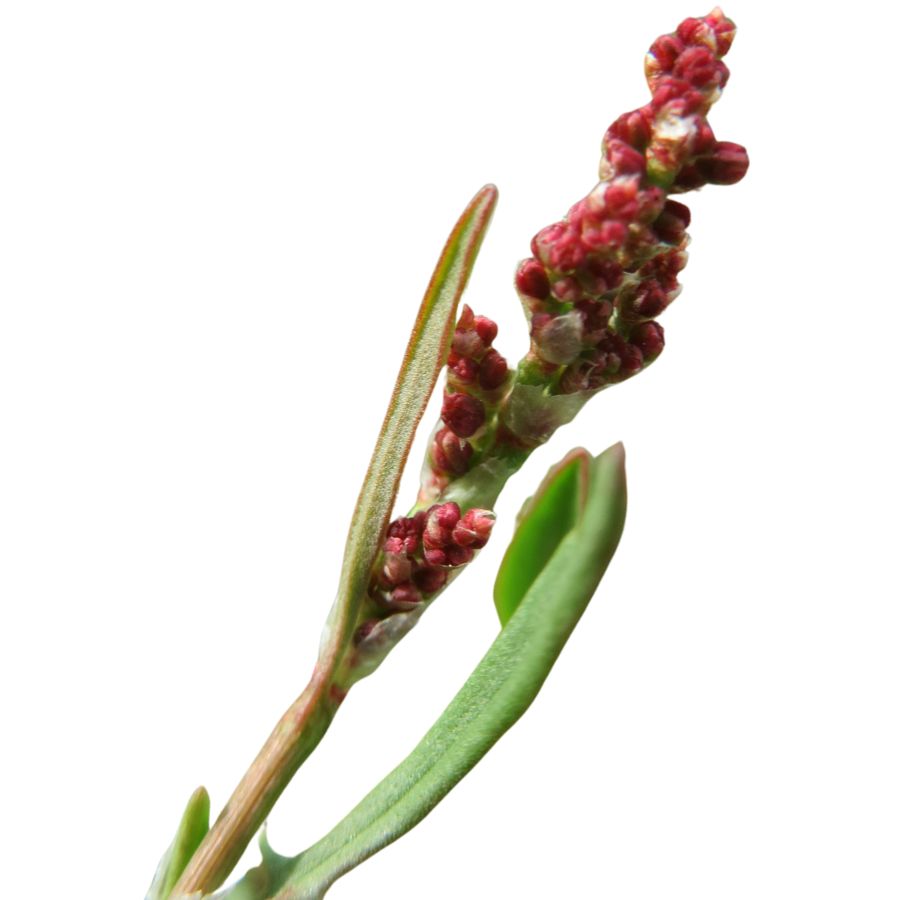
Sheep sorrel has narrow, arrow-shaped leaves with two small lobes at the base and a sharp, lemony flavor that hits immediately when you chew it. You can eat the leaves raw, toss them into soups, or blend them into sauces where their tang brightens up heavy dishes.
The leaves are soft and tender, and the stems are edible too, though they’re a bit more fibrous. Avoid confusing it with related docks like curly dock—those leaves are broader, tougher, and don’t have the same tart bite.
People mostly use sheep sorrel fresh, but it also dries well for tea or powdered seasoning. Its high oxalic acid content means you shouldn’t eat large amounts regularly, especially if you have kidney issues.
Red-tinted veins often run through the green leaves, especially in poor or acidic soils. The roots and flowers aren’t typically eaten, so stick with the leaves and young stems.
Curly Dock (Rumex crispus)
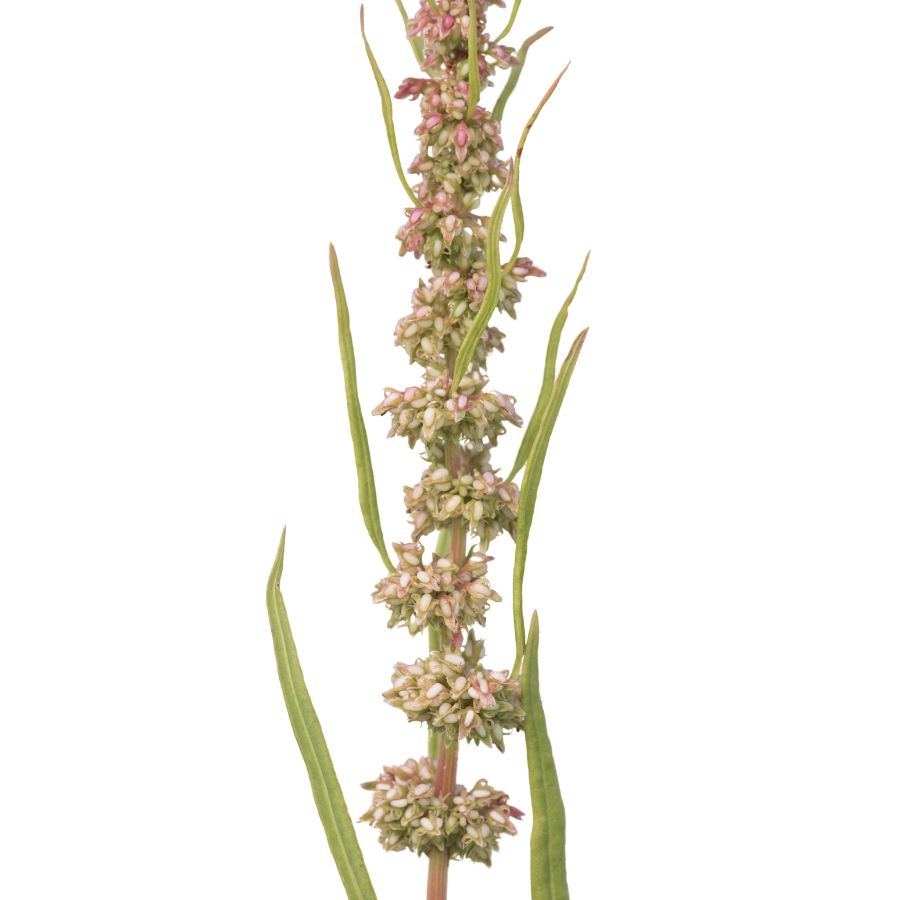
Curly dock, sometimes called yellow dock, is easy to spot once you know what to look for. It has long, wavy-edged leaves that form a rosette at the base, with tall stalks that eventually turn rusty brown as seeds mature.
The young leaves are edible and often cooked to mellow out their sharp, lemony taste, which can be too strong when eaten raw. You can also dry and powder the seeds to use as a flour supplement, although they are tiny and take some effort to prepare.
Curly dock has some lookalikes, like other types of dock and sorrel, but its heavily crinkled leaf edges and thick taproot help it stand out. Be careful not to confuse it with plants like wild rhubarb, which can have toxic parts if misidentified.
Besides being edible, curly dock has a history of being used in homemade remedies for skin irritation. The roots are not eaten raw because they are tough and contain compounds that can upset your stomach if you are not careful.
Wild Mint (Mentha arvensis)

You’re probably familiar with the strong scent of wild mint, which comes from the essential oils concentrated in its leaves. It has square stems, lance-shaped leaves with slightly toothed edges, and pale lilac flower clusters.
The fresh leaves can be eaten raw, cooked into soups, or muddled into drinks for a crisp flavor. Expect a bright, menthol-like kick with a hint of sweetness.
False mint species like purple deadnettle grow in similar spots but lack the menthol smell and have fuzzy leaves. If the plant doesn’t smell like mint, it probably isn’t.
Stick to the leaves and younger stems for eating because the woody stalks aren’t palatable. Wild mint also holds up well when dried and stored for tea or seasoning.
Peppermint (Mentha × piperita)
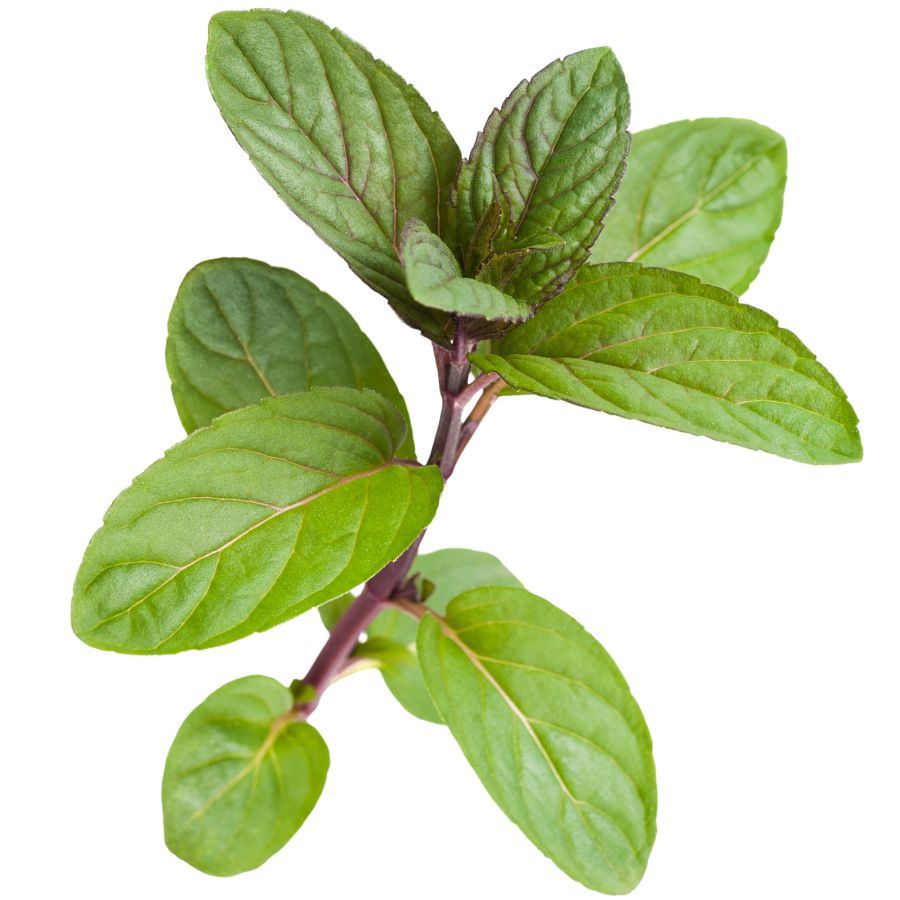
The deep green leaves of peppermint are sharply toothed, growing opposite on square, purplish stems that can sprawl if not trimmed. It often grows in dense patches with a clean, piercing scent released when bruised.
Only the leaves and soft upper stems are edible—roots and woody stems should be discarded. Use it to make fresh tea, infuse syrups, or add a sharp bite to chocolate-based treats and fruit salads.
The flavor is intensely cooling and slightly sweet, with a lingering menthol aftertaste. When chewed raw, the texture is slightly fibrous but softens easily when chopped or steeped.
Peppermint can be mistaken for other mint species, but its higher menthol content and reddish stem hue make it easy to separate if you compare carefully. Rinsing thoroughly before use is essential, especially if foraged from wild or weedy areas.
Toxic Plants That Look Like Edible Plants
There are plenty of wild edibles to choose from, but some toxic native plants closely resemble them. Mistaking the wrong one can lead to severe illness or even death, so it’s important to know exactly what you’re picking.
Poison Hemlock (Conium maculatum)
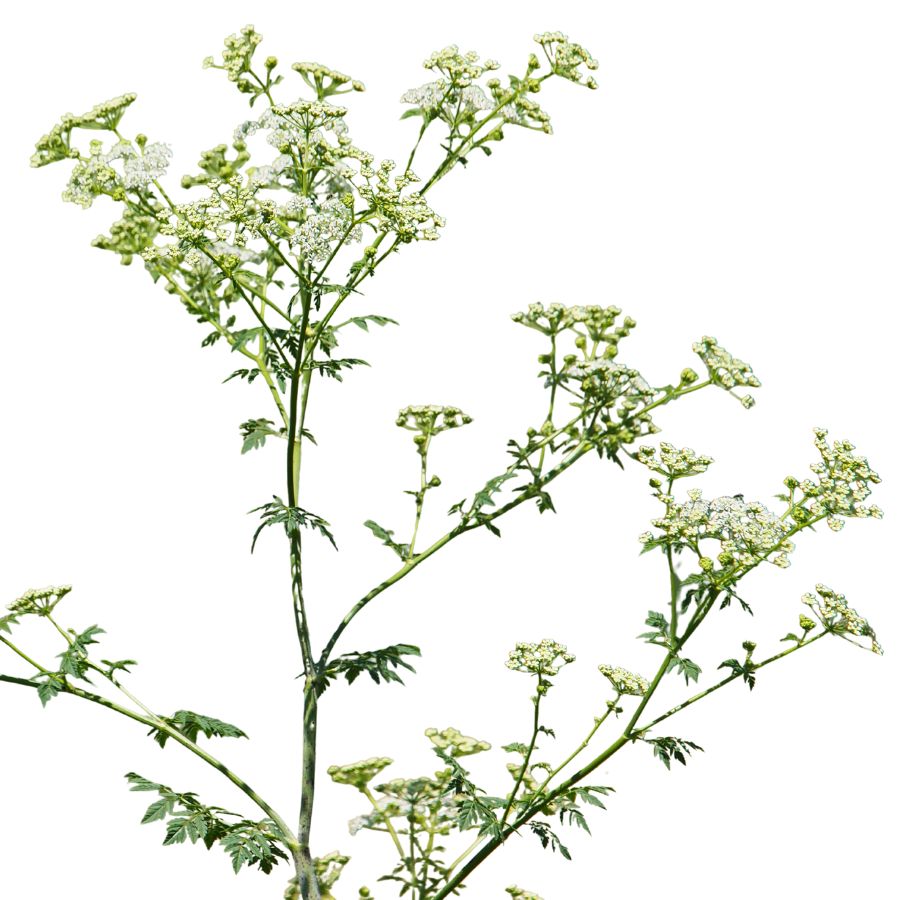
Often mistaken for: Wild carrot (Daucus carota)
Poison hemlock is a tall plant with lacy leaves and umbrella-like clusters of tiny white flowers. It has smooth, hollow stems with purple blotches and grows in sunny places like roadsides, meadows, and stream banks.
Unlike wild carrot, which has hairy stems and a dark central floret, poison hemlock has a musty odor and no flower center spot. It’s extremely toxic; just a small amount can be fatal, and even touching the sap can irritate the skin.
Water Hemlock (Cicuta spp.)
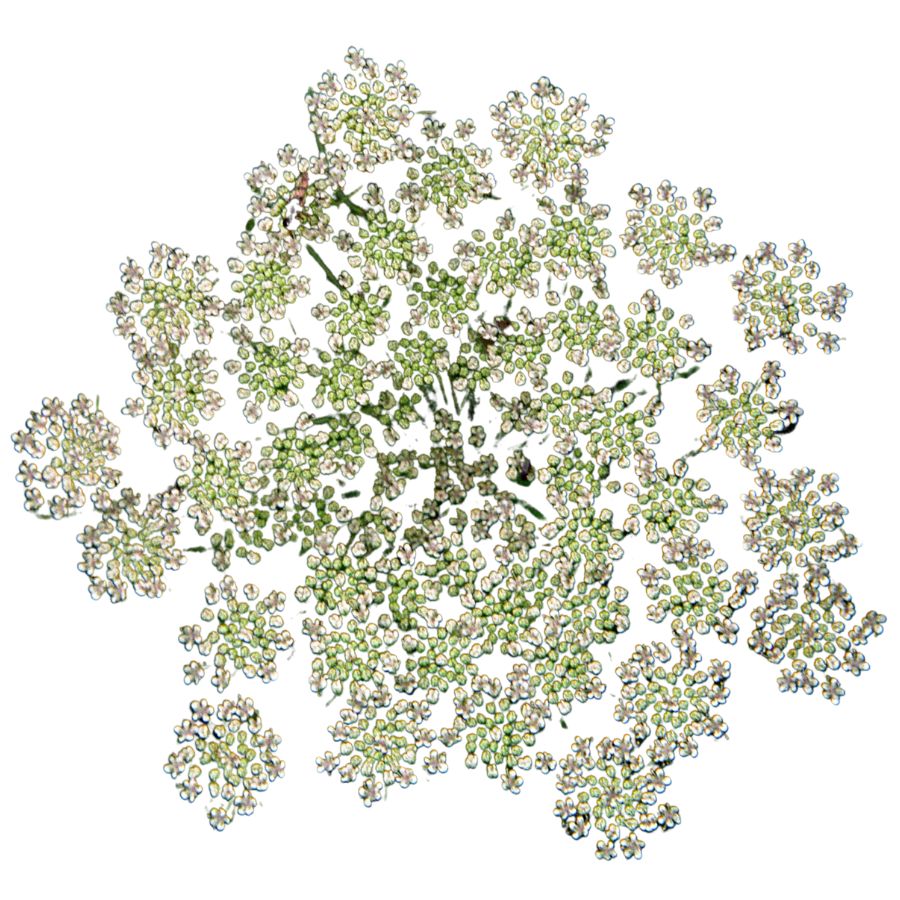
Often mistaken for: Wild parsnip (Pastinaca sativa) or wild celery (Apium spp.)
Water hemlock is a tall, branching plant with umbrella-shaped clusters of small white flowers. It grows in wet places like stream banks, marshes, and ditches, with stems that often show purple streaks or spots.
It can be confused with wild parsnip or wild celery, but its thick, hollow roots have internal chambers and release a yellow, foul-smelling sap when cut. Water hemlock is the most toxic plant in North America, and just a small amount can cause seizures, respiratory failure, and death.
False Hellebore (Veratrum viride)
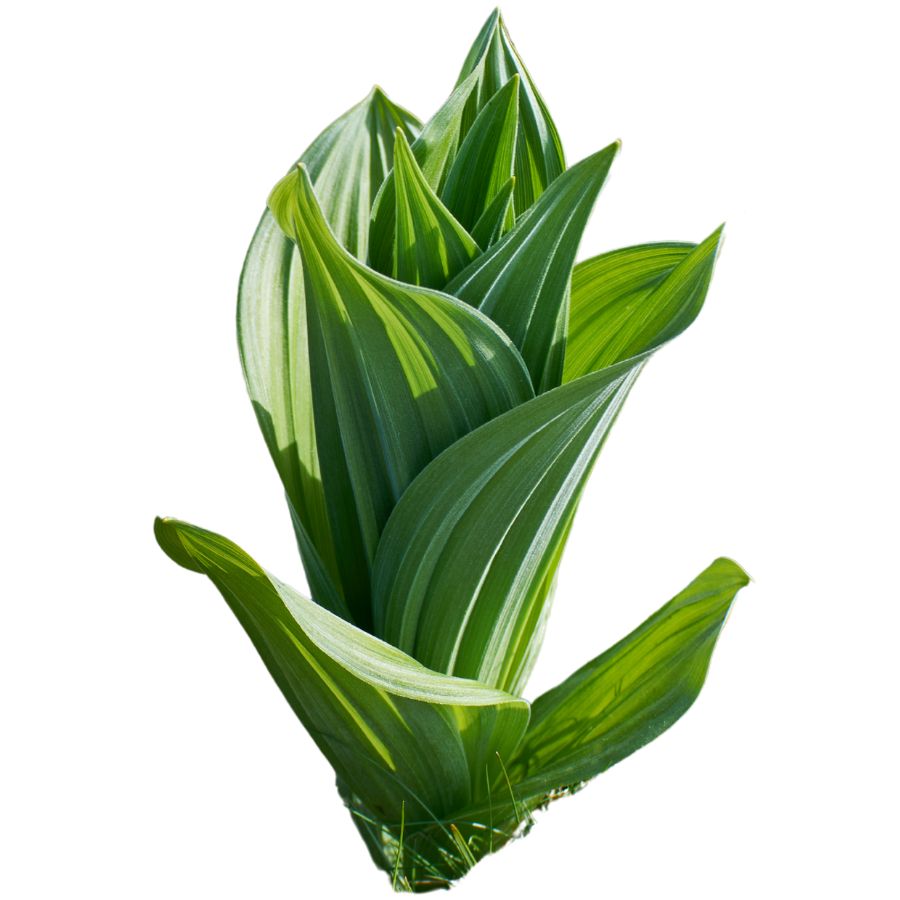
Often mistaken for: Ramps (Allium tricoccum)
False hellebore is a tall plant with broad, pleated green leaves that grow in a spiral from the base, often appearing early in spring. It grows in moist woods, meadows, and along streams.
It’s commonly mistaken for ramps, but ramps have a strong onion or garlic smell, while false hellebore is odorless and later grows a tall flower stalk. The plant is highly toxic, and eating any part can cause nausea, a slowed heart rate, and even death due to its alkaloids that affect the nervous and cardiovascular systems.
Death Camas (Zigadenus spp.)
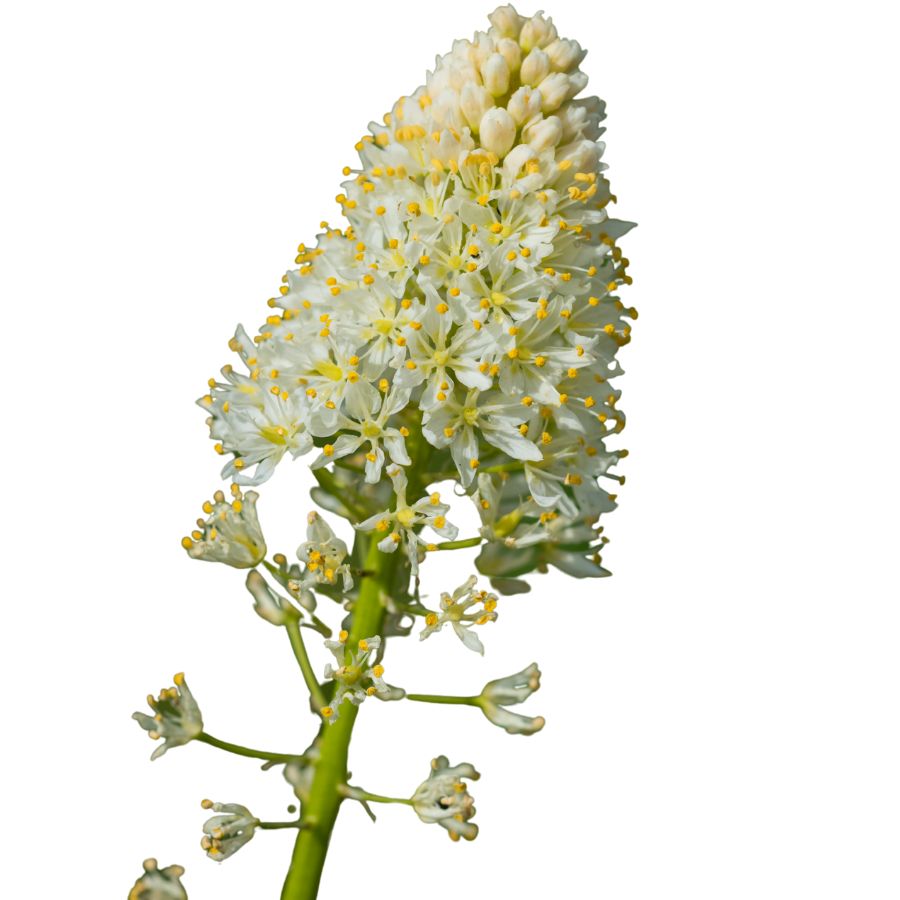
Often mistaken for: Wild onion or wild garlic (Allium spp.)
Death camas is a slender, grass-like plant that grows from underground bulbs and is found in open woods, meadows, and grassy hillsides. It has small, cream-colored flowers in loose clusters atop a tall stalk.
It’s often confused with wild onion or wild garlic due to their similar narrow leaves and habitats, but only Allium plants have a strong onion or garlic scent, while death camas has none. The plant is extremely poisonous, especially the bulbs, and even a small amount can cause nausea, vomiting, a slowed heartbeat, and potentially fatal respiratory failure.
Buckthorn Berries (Rhamnus spp.)
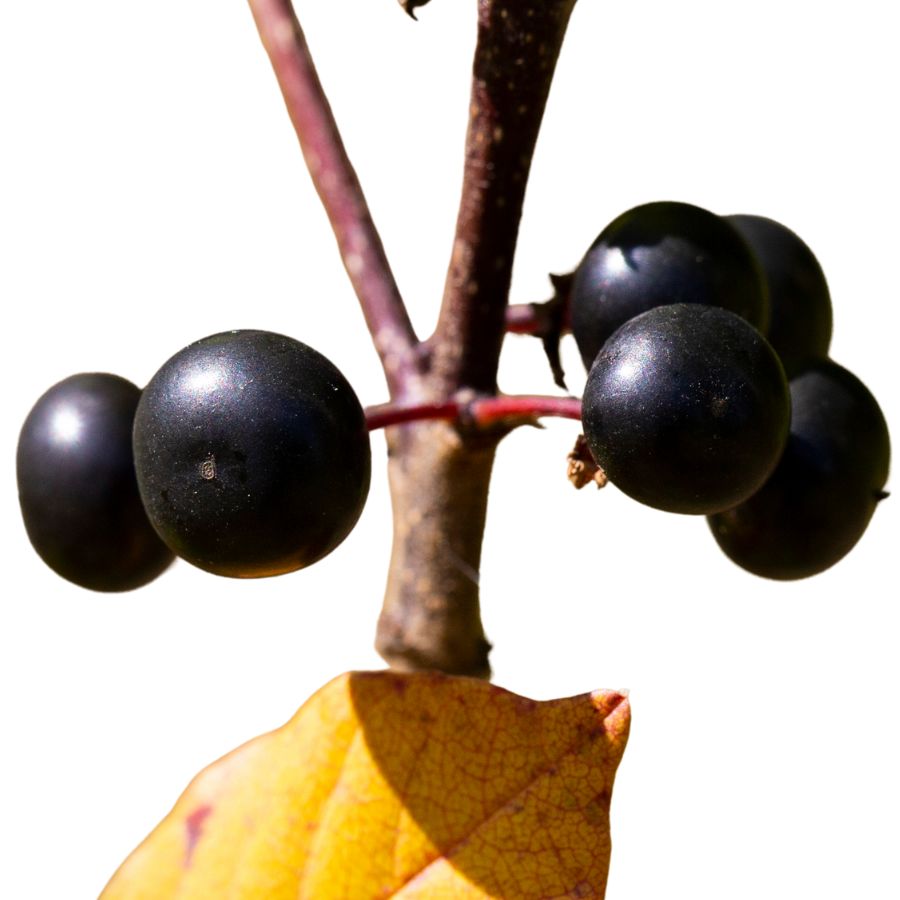
Often mistaken for: Elderberries (Sambucus spp.)
Buckthorn is a shrub or small tree often found along woodland edges, roadsides, and disturbed areas. It produces small, round berries that ripen to dark purple or black and usually grow in loose clusters.
These berries are sometimes mistaken for elderberries and other wild fruits, which also grow in dark clusters, but elderberries form flat-topped clusters on reddish stems while buckthorn berries are more scattered. Buckthorn berries are unsafe to eat as they contain compounds that can cause cramping, vomiting, and diarrhea, and large amounts may lead to dehydration and serious digestive problems.
Mayapple (Podophyllum peltatum)
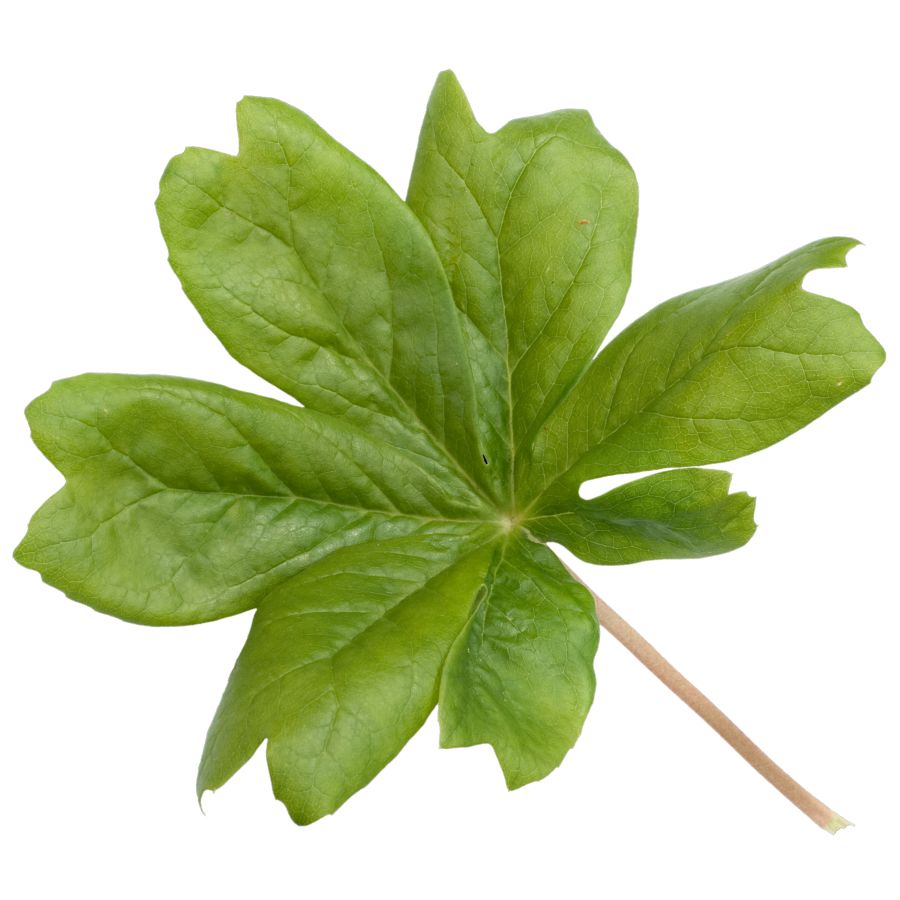
Often mistaken for: Wild grapes (Vitis spp.)
Mayapple is a low-growing plant found in shady forests and woodland clearings. It has large, umbrella-like leaves and produces a single pale fruit hidden beneath the foliage.
The unripe fruit resembles a small green grape, causing confusion with wild grapes, which grow in woody clusters on vines. All parts of the mayapple are toxic except the fully ripe, yellow fruit, which is only safe in small amounts. Eating unripe fruit or other parts can lead to nausea, vomiting, and severe dehydration.
Virginia Creeper (Parthenocissus quinquefolia)
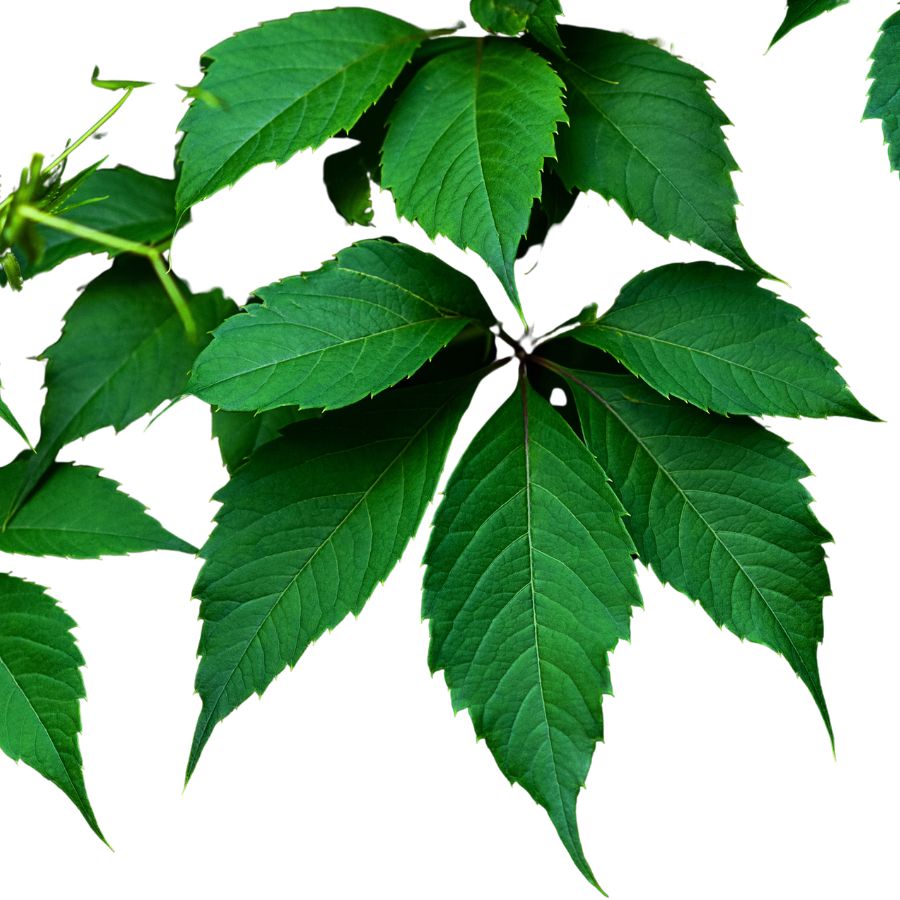
Often mistaken for: Wild grapes (Vitis spp.)
Virginia creeper is a fast-growing vine found on fences, trees, and forest edges. It has five leaflets per stem and produces small, bluish-purple berries from late summer to fall.
It’s often confused with wild grapes since both are climbing vines with similar berries, but grapevines have large, lobed single leaves and tighter fruit clusters. Virginia creeper’s berries are toxic to humans and contain oxalate crystals that can cause nausea, vomiting, and throat irritation.
Castor Bean (Ricinus communis)
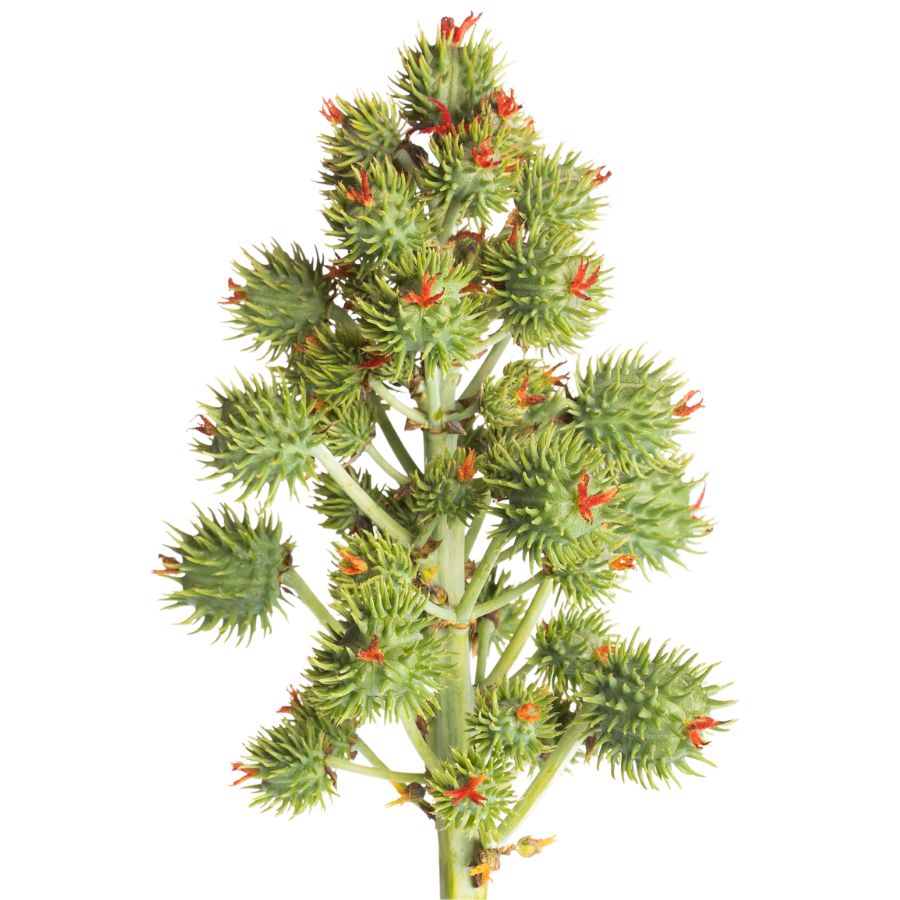
Often mistaken for: Wild rhubarb (Rumex spp. or Rheum spp.)
Castor bean is a bold plant with large, lobed leaves and tall red or green stalks, often found in gardens, along roadsides, and in disturbed areas in warmer regions in the US. Its red-tinged stems and overall size can resemble wild rhubarb to the untrained eye.
Unlike rhubarb, castor bean plants produce spiny seed pods containing glossy, mottled seeds that are extremely toxic. These seeds contain ricin, a deadly compound even in small amounts. While all parts of the plant are toxic, the seeds are especially dangerous and should never be handled or ingested.
A Quick Reminder
Before we get into the specifics about where and how to find these mushrooms, we want to be clear that before ingesting any wild mushroom, it should be identified with 100% certainty as edible by someone qualified and experienced in mushroom identification, such as a professional mycologist or an expert forager. Misidentification of mushrooms can lead to serious illness or death.
All mushrooms have the potential to cause severe adverse reactions in certain individuals, even death. If you are consuming mushrooms, it is crucial to cook them thoroughly and properly and only eat a small portion to test for personal tolerance. Some people may have allergies or sensitivities to specific mushrooms, even if they are considered safe for others.
The information provided in this article is for general informational and educational purposes only. Foraging for wild mushrooms involves inherent risks.
How to Get the Best Results Foraging
Safety should always come first when it comes to foraging. Whether you’re in a rural forest or a suburban greenbelt, knowing how to harvest wild foods properly is a key part of staying safe and respectful in the field.
Always Confirm Plant ID Before You Harvest Anything
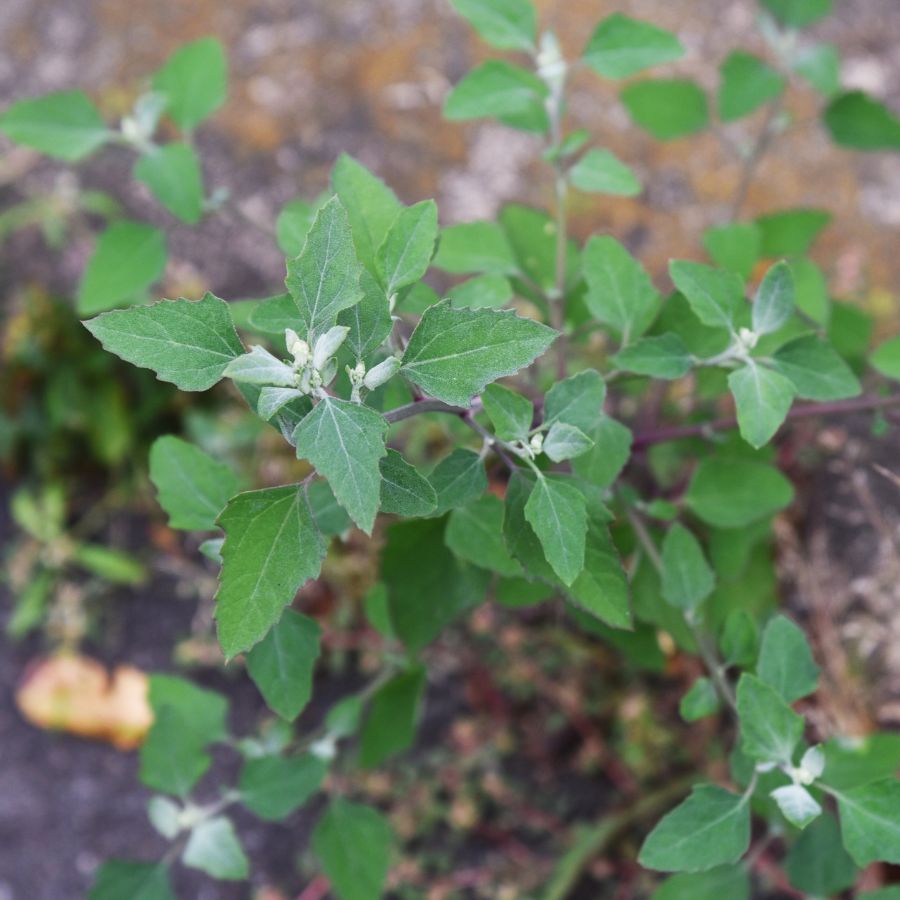
Knowing exactly what you’re picking is the most important part of safe foraging. Some edible plants have nearly identical toxic lookalikes, and a wrong guess can make you seriously sick.
Use more than one reliable source to confirm your ID, like field guides, apps, and trusted websites. Pay close attention to small details. Things like leaf shape, stem texture, and how the flowers or fruits are arranged all matter.
Not All Edible Plants Are Safe to Eat Whole
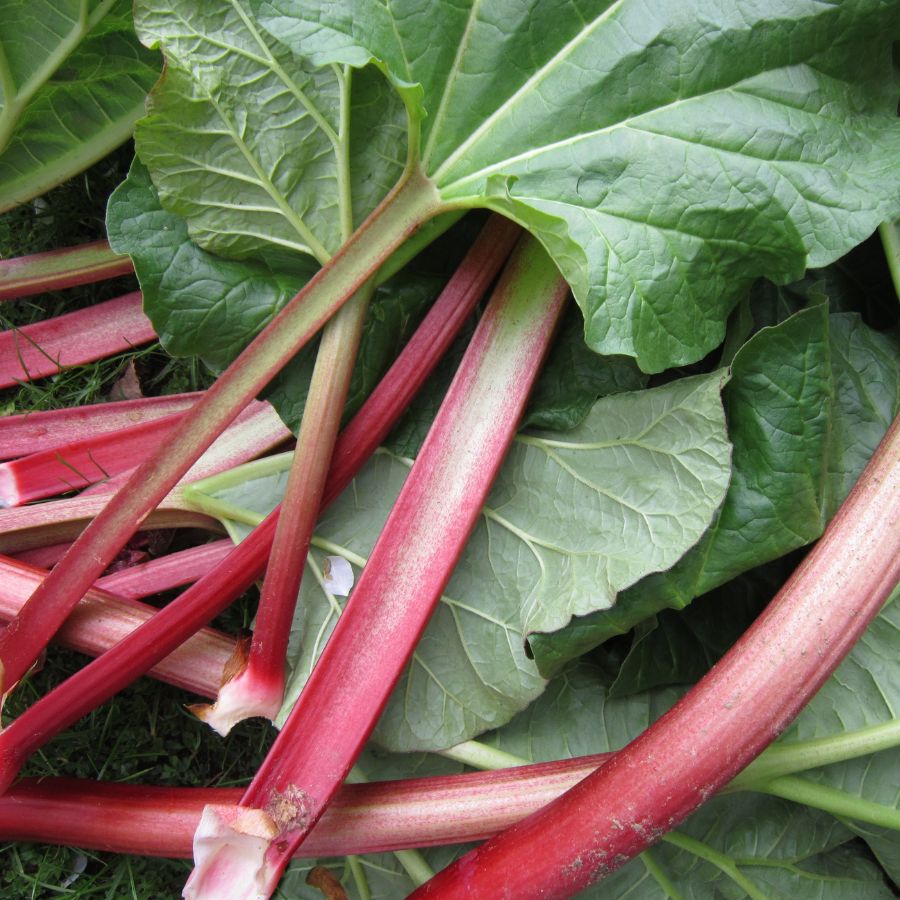
Just because a plant is edible doesn’t mean every part of it is safe. Some plants have leaves, stems, or seeds that can be toxic if eaten raw or prepared the wrong way.
For example, pokeweed is only safe when young and properly cooked, while elderberries need to be heated before eating. Rhubarb stems are fine, but the leaves are poisonous. Always look up which parts are edible and how they should be handled.
Avoid Foraging in Polluted or Contaminated Areas
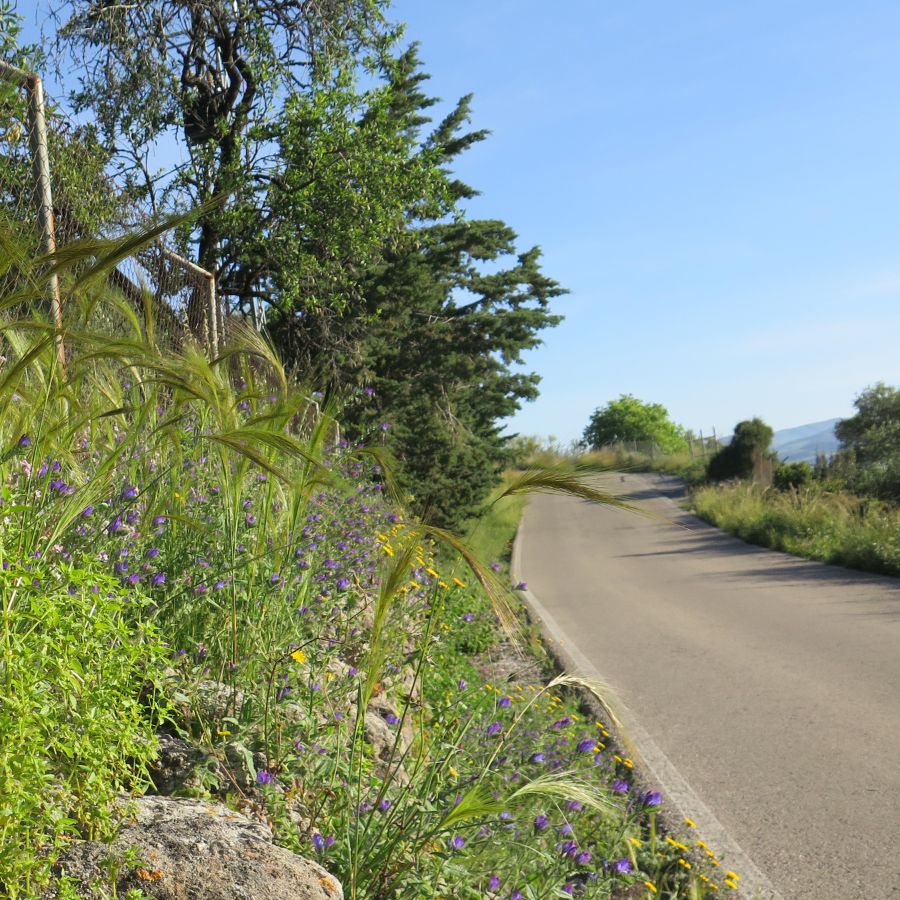
Where you forage matters just as much as what you pick. Plants growing near roads, buildings, or farmland might be coated in chemicals or growing in polluted soil.
Even safe plants can take in harmful substances from the air, water, or ground. Stick to clean, natural areas like forests, local parks that allow foraging, or your own yard when possible.
Don’t Harvest More Than What You Need
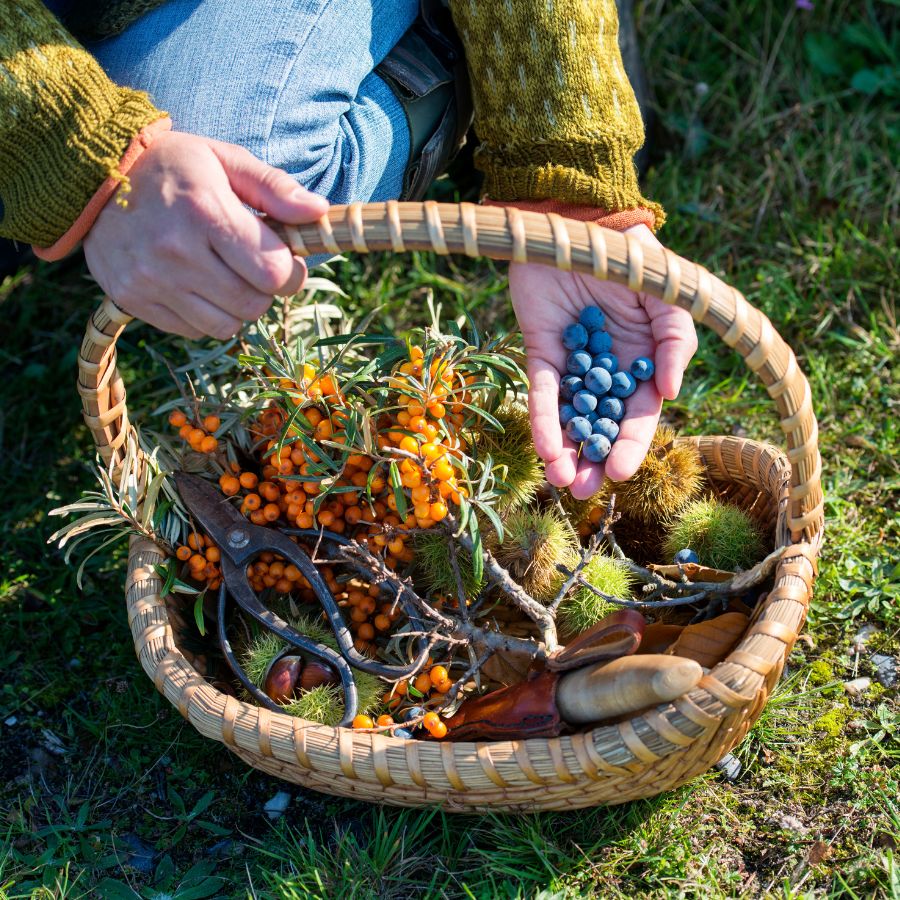
When you forage, take only what you plan to use. Overharvesting can hurt local plant populations and reduce future growth in that area.
Leaving plenty behind helps plants reproduce and supports wildlife that depends on them. It also ensures other foragers have a chance to enjoy the same resources.
Protect Yourself and Your Finds with Proper Foraging Gear

Having the right tools makes foraging easier and safer. Gloves protect your hands from irritants like stinging nettle, and a good knife or scissors lets you harvest cleanly without damaging the plant.
Use a basket or breathable bag to carry what you collect. Plastic bags hold too much moisture and can cause your greens to spoil before you get home.
This forager’s toolkit covers the essentials for any level of experience.
Watch for Allergic Reactions When Trying New Wild Foods

Even if a wild plant is safe to eat, your body might react to it in unexpected ways. It’s best to try a small amount first and wait to see how you feel.
Be extra careful with kids or anyone who has allergies. A plant that’s harmless for one person could cause a reaction in someone else.
Check Local Rules Before Foraging on Any Land
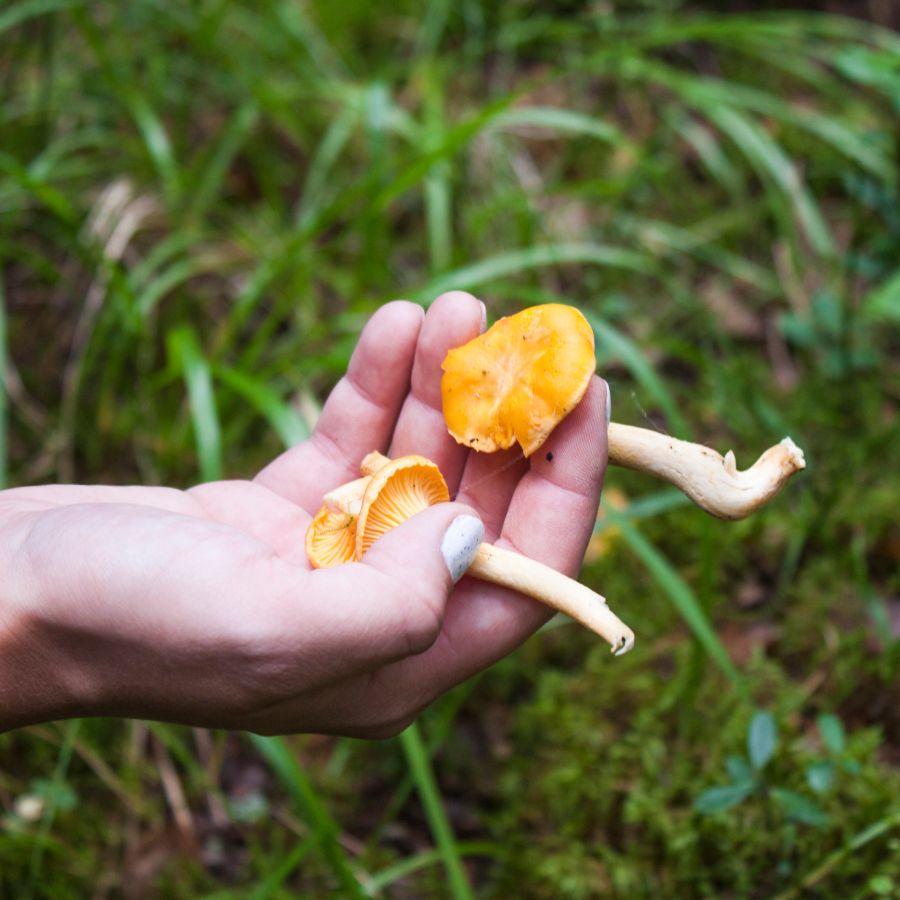
Before you start foraging, make sure you know the rules for the area you’re in. What’s allowed in one spot might be completely off-limits just a few miles away.
Some public lands permit limited foraging, while others, like national parks, usually don’t allow it at all. If you’re on private property, always get permission first.
Before you head out
Before embarking on any foraging activities, it is essential to understand and follow local laws and guidelines. Always confirm that you have permission to access any land and obtain permission from landowners if you are foraging on private property. Trespassing or foraging without permission is illegal and disrespectful.
For public lands, familiarize yourself with the foraging regulations, as some areas may restrict or prohibit the collection of mushrooms or other wild foods. These regulations and laws are frequently changing so always verify them before heading out to hunt. What we have listed below may be out of date and inaccurate as a result.
Where to Find Forageables in the State
There is a range of foraging spots where edible plants grow naturally and often in abundance:
| Plant | Locations |
| Blackberry (Rubus fruticosus) | – Blue Hills Reservation – Mount Tom State Reservation – Wachusett Mountain State Reservation |
| Black Raspberry (Rubus occidentalis) | – Mineral Hills Conservation Area, Northampton – Mount Toby State Forest – Harold Parker State Forest |
| Red Raspberry (Rubus idaeus) | – Mohawk Trail State Forest – Quabbin Reservoir Watershed – Mount Greylock State Reservation |
| Wild Strawberry (Fragaria virginiana) | – Mount Holyoke Range State Park – Halibut Point State Park – Myles Standish State Forest |
| Dandelion (Taraxacum officinale) | – Boston Common – Arnold Arboretum – Franklin Park |
| Lamb’s Quarters (Chenopodium album) | – Community gardens in Cambridge – Urban farms in Dorchester – Fields near Amherst |
| Chickweed (Stellaria media) | – Back Bay Fens – Jamaica Pond Park – Mount Auburn Cemetery |
| Garlic Mustard (Alliaria petiolata) | – Middlesex Fells Reservation – Minute Man National Historical Park – Great Meadows National Wildlife Refuge |
| Wood Sorrel (Oxalis stricta) | – Mount Tom State Reservation – Hopkinton State Park – Breakheart Reservation |
| Curly Dock (Rumex crispus) | – Charles River Esplanade – Revere Beach Reservation – Mount Wachusett State Reservation |
| Plantain (Plantago major, Plantago lanceolata) | – Boston Public Garden – Mount Auburn Cemetery – Jamaica Pond Park |
| Milkweed (Asclepias syriaca) | – Garden at Elm Bank, Wellesley – Mount Holyoke Range State Park – Myles Standish State Forest |
| Stinging Nettle (Urtica dioica) | – Mount Toby State Forest – Quabbin Reservoir Watershed – Mount Greylock State Reservation |
| Sheep Sorrel (Rumex acetosella) | – Blue Hills Reservation – Mount Wachusett State Reservation – Halibut Point State Park |
| Groundnut (Apios americana) | – Oxbow National Wildlife Refuge – Sudbury River banks – Assabet River National Wildlife Refuge |
| Jerusalem Artichoke (Helianthus tuberosus) | – Mount Tom State Reservation – Connecticut River floodplains – Middlesex Fells Reservation |
| Wild Leek / Ramp (Allium tricoccum) | – Mount Toby State Forest – Mohawk Trail State Forest – Mount Greylock State Reservation |
| Wild Garlic (Allium vineale) | – Mount Holyoke Range State Park – Quabbin Reservoir Watershed – Mount Wachusett State Reservation |
| Fox Grape (Vitis labrusca) | – Mount Tom State Reservation – Mount Toby State Forest – Halibut Point State Park |
| Blueberry (Vaccinium angustifolium) | – Mount Greylock State Reservation – Myles Standish State Forest – Blue Hills Reservation |
| Wintergreen (Gaultheria procumbens) | – Mount Grace State Forest – Savoy Mountain State Forest – October Mountain State Forest |
| Black Elderberry (Sambucus nigra ssp. canadensis) | – Assabet River National Wildlife Refuge – Ipswich River Wildlife Sanctuary – Great Meadows National Wildlife Refuge |
| American Hazelnut (Corylus americana) | – Harold Parker State Forest – Wendell State Forest – Mount Tom State Reservation |
| Beech Nut (Fagus grandifolia) | – Mohawk Trail State Forest – Beartown State Forest – Mount Toby State Forest |
| Acorn (Quercus spp.) | – Blue Hills Reservation – Myles Standish State Forest – Mount Greylock State Reservation |
| Pine (Pinus spp.) | – Mount Wachusett State Reservation – Douglas State Forest – Savoy Mountain State Forest |
| Common Cattail (Typha latifolia) | – Charles River Wetlands – Great Meadows National Wildlife Refuge – Ipswich River Wildlife Sanctuary |
| Arrowhead (Sagittaria latifolia) | – Sudbury River Marshes – Oxbow National Wildlife Refuge – Assabet River National Wildlife Refuge |
| Common Burdock (Arctium minus) | – Mount Auburn Cemetery – Franklin Park – Back Bay Fens |
| Wild Mint (Mentha arvensis) | – Sudbury River Banks – Assabet River Banks – Ipswich River Banks |
| Peppermint (Mentha × piperita) | – Jamaica Pond Park – Arnold Arboretum – Mount Auburn Cemetery |
| Spearmint (Mentha spicata) | – Back Bay Fens – Franklin Park – Boston Public Garden |
| Wild Parsnip (Pastinaca sativa) | – Mount Wachusett State Reservation – Blue Hills Reservation – Myles Standish State Forest |
| Queen Anne’s Lace (Daucus carota) | – Mohawk Trail State Forest – Mount Tom State Reservation – Mount Holyoke Range State Park |
| Wild Rose (Rosa spp.) | – Cape Cod National Seashore – Halibut Point State Park – Sandy Neck Beach Park |
| Sumac (Rhus typhina) | – Mount Greylock State Reservation – Wachusett Mountain State Reservation – Mount Tom State Reservation |
| Sweetfern (Comptonia peregrina) | – Beartown State Forest – Savoy Mountain State Forest – Mount Grace State Forest |
| Hickory Nut (Carya spp.) | – Mohawk Trail State Forest – Mount Toby State Forest – Wendell State Forest |
| Maple (Acer spp.) | – Mount Tom State Reservation – Mount Holyoke Range State Park – Beartown State Forest |
| Birch (Betula spp.) | – Mount Greylock State Reservation – Savoy Mountain State Forest – October Mountain State Forest |
| Wild Mustard (Brassica spp.) | – Mount Holyoke Range State Park – Halibut Point State Park – Myles Standish State Forest |
| Creeping Charlie (Glechoma hederacea) | – Mount Auburn Cemetery – Franklin Park – Back Bay Fens |
| Common Mallow (Malva neglecta) | – Fields near Amherst – Urban gardens in Cambridge – Community gardens in Dorchester |
| Violet (Viola spp.) | – Mount Tom State Reservation – Mount Holyoke Range State Park – Myles Standish State Forest |
| Red Clover (Trifolium pratense) | – Mohawk Trail State Forest – Quabbin Reservoir Watershed – Mount Greylock State Reservation |
| White Clover (Trifolium repens) | – Boston Public Garden – Mount Auburn Cemetery – Jamaica Pond Park |
| Daylily (Hemerocallis fulva) | – Mount Tom State Reservation – Mount Toby State Forest – Halibut Point State Park |
| Yarrow (Achillea millefolium) | – Mount Wachusett State Reservation – Blue Hills Reservation – Myles Standish State Forest |
| Spicebush (Lindera benzoin) | – Mount Holyoke Range State Park – Quabbin Reservoir Watershed – Mount Wachusett State Reservation |
| New England Aster (Symphyotrichum novae-angliae) | – Mount Greylock State Reservation – Beartown State Forest – Mount Tom State Reservation |
| Goldenrod (Solidago spp.) | – Blue Hills Reservation – Myles Standish State Forest – Mount Holyoke Range State Park |
| Wild Sarsaparilla (Aralia nudicaulis) | – Mohawk Trail State Forest – Mount Toby State Forest – Beartown State Forest |
| Blue Vervain (Verbena hastata) | – Mount Tom State Reservation – Quabbin Reservoir Watershed – Mount Holyoke Range State Park |
Peak Foraging Seasons
Different edible plants grow at different times of year, depending on the season and weather. Timing your search makes all the difference.
Spring
Spring brings a fresh wave of wild edible plants as the ground thaws and new growth begins:
| Plant | Months | Best Weather Conditions |
| Dandelion (Taraxacum officinale) | March–May | Cool, moist days; early morning after light rain |
| Chickweed (Stellaria media) | March–May | Cool, damp conditions; shaded areas |
| Garlic Mustard (Alliaria petiolata) | April–June | Cool, moist soil; overcast days |
| Wood Sorrel (Oxalis stricta) | April–June | Cool mornings; partial shade |
| Curly Dock (Rumex crispus) | April–June | Cool, moist environments; after rainfall |
| Plantain (Plantago major, Plantago lanceolata) | April–June | Cool, damp areas; early morning |
| Stinging Nettle (Urtica dioica) | April–June | Cool, moist conditions; wear gloves |
| Sheep Sorrel (Rumex acetosella) | April–June | Cool, sunny days; well-drained soils |
| Wild Leek / Ramp (Allium tricoccum) | April–May | Moist, shaded woodlands; early morning |
| Wild Garlic (Allium vineale) | April–June | Cool, damp areas; overcast days |
| Wild Mustard (Brassica spp.) | April–June | Cool, sunny days; disturbed soils |
| Creeping Charlie (Glechoma hederacea) | April–June | Cool, moist environments; shaded areas |
| Common Mallow (Malva neglecta) | April–June | Cool, dry conditions; open fields |
| Violet (Viola spp.) | April–June | Cool, moist woodlands; early morning |
| Red Clover (Trifolium pratense) | May–June | Warm, sunny days; meadows |
| White Clover (Trifolium repens) | May–June | Warm, sunny days; grassy areas |
| Daylily (Hemerocallis fulva) | May–June | Warm, sunny days; well-drained soils |
| Yarrow (Achillea millefolium) | May–June | Warm, dry conditions; open fields |
| Spicebush (Lindera benzoin) | April–May | Moist, shaded woodlands; after rain |
| Wild Sarsaparilla (Aralia nudicaulis) | May–June | Cool, moist forests; early morning |
Summer
Summer is a peak season for foraging, with fruits, flowers, and greens growing in full force:
| Plant | Months | Best Weather Conditions |
| Blackberry (Rubus fruticosus) | July–August | Warm, sunny days; after morning dew |
| Black Raspberry (Rubus occidentalis) | June–July | Warm, dry conditions; early morning |
| Red Raspberry (Rubus idaeus) | June–July | Warm, sunny days; well-drained areas |
| Wild Strawberry (Fragaria virginiana) | June–July | Warm, sunny days; early morning |
| Lamb’s Quarters (Chenopodium album) | June–August | Warm, dry conditions; open fields |
| Milkweed (Asclepias syriaca) | June–August | Warm, sunny days; avoid roadside areas |
| Groundnut (Apios americana) | August–September | Warm, moist soils; near water bodies |
| Common Cattail (Typha latifolia) | June–August | Warm, wet conditions; shallow waters |
| Arrowhead (Sagittaria latifolia) | June–August | Warm, shallow waters; sunny days |
| Common Burdock (Arctium minus) | June–August | Warm, disturbed soils; after rainfall |
| Wild Mint (Mentha arvensis) | June–August | Cool, moist areas; near streams |
| Peppermint (Mentha × piperita) | June–August | Cool, moist environments; partial shade |
| Spearmint (Mentha spicata) | June–August | Cool, moist areas; early morning |
| Wild Parsnip (Pastinaca sativa) | June–August | Warm, sunny days; open fields |
| Queen Anne’s Lace (Daucus carota) | June–August | Warm, dry conditions; meadows |
| Wild Rose (Rosa spp.) | June–August | Warm, sunny days; well-drained soils |
| Sumac (Rhus typhina) | July–August | Warm, dry conditions; open areas |
| Sweetfern (Comptonia peregrina) | June–August | Warm, sandy soils; sunny days |
| New England Aster (Symphyotrichum novae-angliae) | August–September | Warm, sunny days; open fields |
| Goldenrod (Solidago spp.) | August–September | Warm, dry conditions; meadows |
| Blue Vervain (Verbena hastata) | July–September | Warm, moist areas; near wetlands |
Fall
As temperatures drop, many edible plants shift underground or produce their last harvests:
| Plant | Months | Best Weather Conditions |
| Blueberry (Vaccinium angustifolium) | September–October | Cool, sunny days; after morning dew |
| Wintergreen (Gaultheria procumbens) | September–October | Cool, shaded areas; moist soil |
| Black Elderberry (Sambucus nigra ssp. canadensis) | August–September | Cool, sunny days; after rainfall |
| American Hazelnut (Corylus americana) | September–October | Cool, dry conditions; early morning |
| Beech Nut (Fagus grandifolia) | September–October | Cool, dry days; after nuts have fallen |
| Acorn (Quercus spp.) | September–October | Cool, dry conditions; after first frost |
| Pine (Pinus spp.) | September–October | Cool, dry days; collect fallen cones |
| Fox Grape (Vitis labrusca) | September–October | Warm, sunny days; edges of woodlands or fence lines |
| Jerusalem Artichoke (Helianthus tuberosus) | October–November | Cool, moist soil; after first frost |
| Hickory Nut (Carya spp.) | September–October | Cool, dry conditions; after nuts have fallen |
| Maple (Acer spp.) | September–October | Cool, dry days; collect fallen seeds |
| Birch (Betula spp.) | September–October | Cool, moist conditions; early morning |
Winter
Winter foraging is limited but still possible, with hardy plants and preserved growth holding on through the cold:
| Plant | Months | Best Weather Conditions |
| Wintergreen (Gaultheria procumbens) | December–February | Cold, snow-covered areas; evergreen leaves |
| Pine (Pinus spp.) | December–February | Cold, dry days; collect fallen needles |
| Birch (Betula spp.) | December–February | Cold |
One Final Disclaimer
The information provided in this article is for general informational and educational purposes only. Foraging for wild plants and mushrooms involves inherent risks. Some wild plants and mushrooms are toxic and can be easily mistaken for edible varieties.
Before ingesting anything, it should be identified with 100% certainty as edible by someone qualified and experienced in mushroom and plant identification, such as a professional mycologist or an expert forager. Misidentification can lead to serious illness or death.
All mushrooms and plants have the potential to cause severe adverse reactions in certain individuals, even death. If you are consuming foraged items, it is crucial to cook them thoroughly and properly and only eat a small portion to test for personal tolerance. Some people may have allergies or sensitivities to specific mushrooms and plants, even if they are considered safe for others.
Foraged items should always be fully cooked with proper instructions to ensure they are safe to eat. Many wild mushrooms and plants contain toxins and compounds that can be harmful if ingested.

